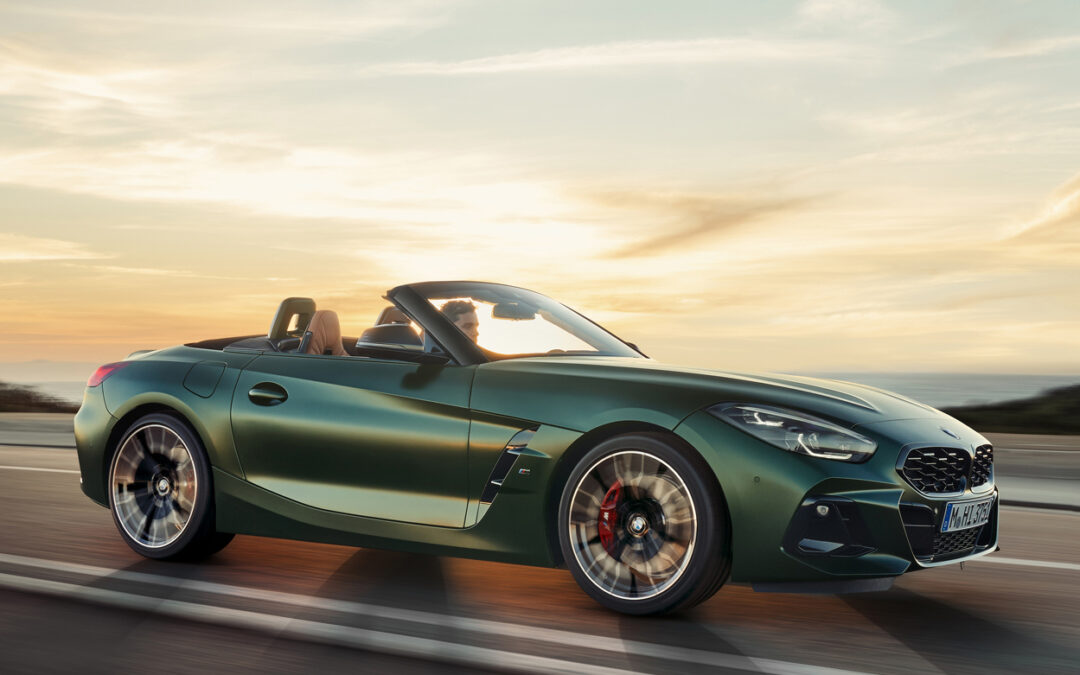EVERY MANUAL | RANKED
Shifts from the gods
Rated and ranked: every car with a manual gearbox on sale now
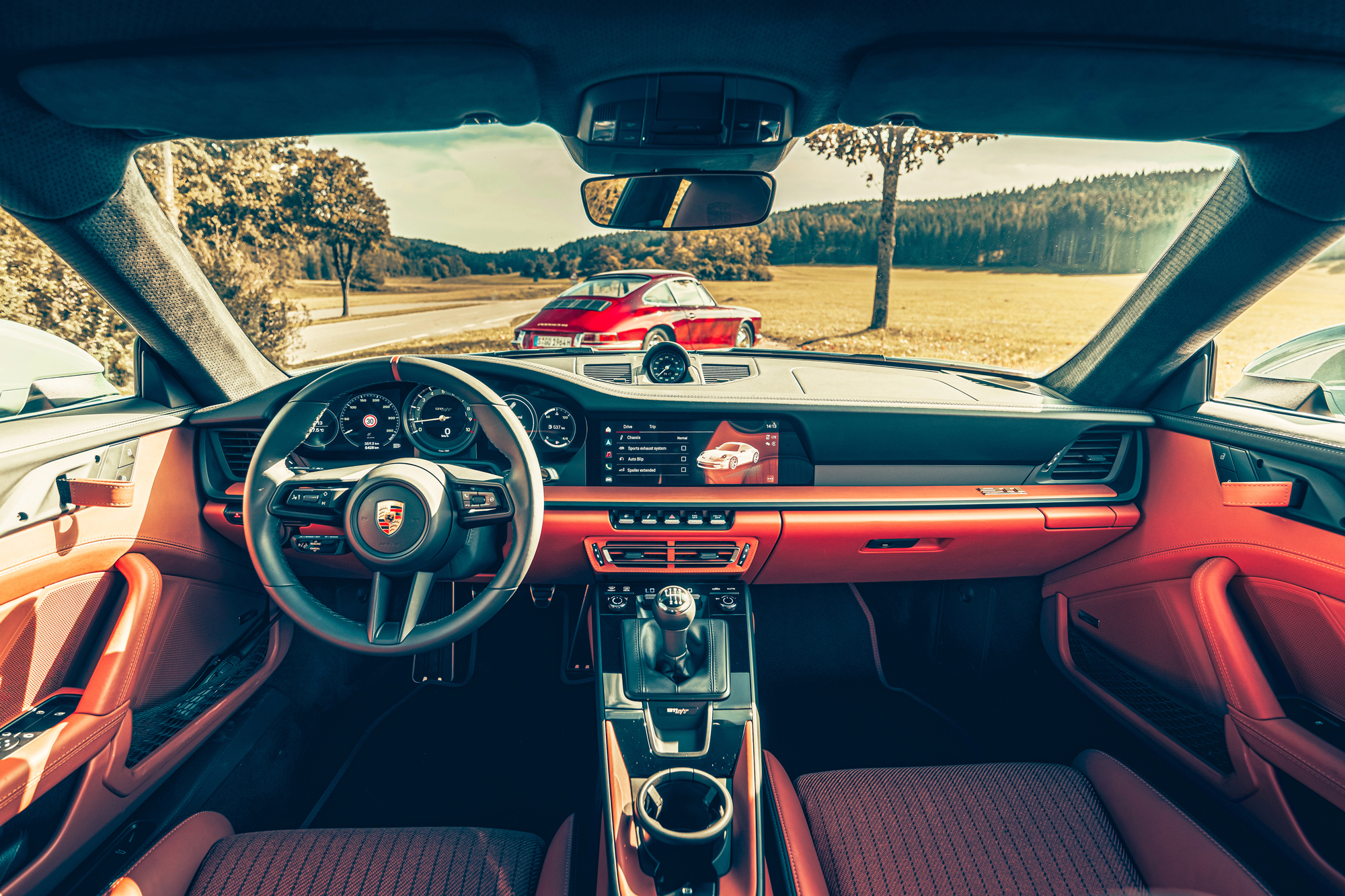
Make no mistake, stick shifting with a clutch pedal is making life more difficult for yourself. It’s growing your own carrots or buying vinyl when you could stream.
Crawling in traffic, stalling in front of a crowd, mistiming the movement of pedal and lever with a deafening graunch – with a manual, you can find yourself wishing you’d bought an easy, lazy auto (or, heaven forbid, an EV). Once almost universal in Europe and popular in the US, the manual transmission has been on the wane for decades, usurped by slick autos and trendy paddleshifts (‘I’m an F1 driver!’ No, you’re not).
But the manual lives, and for one very good reason. Put simply, it is the way driving is meant to be. It is the purest form of what is, for many of us, an art form as legitimate as sawing a cow in half or painting Provencal landscapes. It’s the warm hum and crackling energy of vinyl. It’s homegrown carrots that taste of carrot. It’s the real deal, and when you get it right – when the choreography of clutch, gearstick and perhaps a flourish of revs, if you’re into that, are perfect – well, it’s the greatest feeling on Earth, the rush of euphoria that follows unmatched by anything else that might reasonably be considered legal.
Here are the last cars with manual transmissions, from not worth the extra effort to really quite special.

67. Nissan Juke
The car that kickstarted the supermini crossover craze isn’t as lively as it looks. Springy, feel-free steering, a hard ride and cupboard-under-the-stairs back-seat ambience ruin any chances of matching a Ford Puma. Even the 141bhp auto-only hybrid is a slug by class standards and the base 112bhp 1.0 is equally behind the 0-62mph times. At least going with the manual means you’ll get there 1.1sec sooner.
What do you gain by going for the manual?
A bit more pep, a bit more personality, and a smoother step-off from rest.
What do you lose by going for the manual?
You’ll work harder in town, and the auto’s slightly better on emissions and official economy.

66. Nissan Qashqai
The massively popular Qashqai’s best engine is the 202bhp e-Power range-extender hybrid, but manual fans can still get their fill by downgrading to the 1.3-litre mild hybrid. Trouble is, they’ll have soon had their fill. Only the base 138bhp version, and not the nippier now-CVT-only 158bhp tune, gets a manual ’box, but absurdly over-long gearing kills its performance and any entertainment value. Forget the manual and find the cash for the e-Power if you can.
What do you gain by going for the manual?
A £35k door to Qashqai ownership, but Dacia’s Bigster is cheaper still.
What do you lose by going for the manual?
The Qashqai seems to have lost an entire ratio down the gap between second and third.
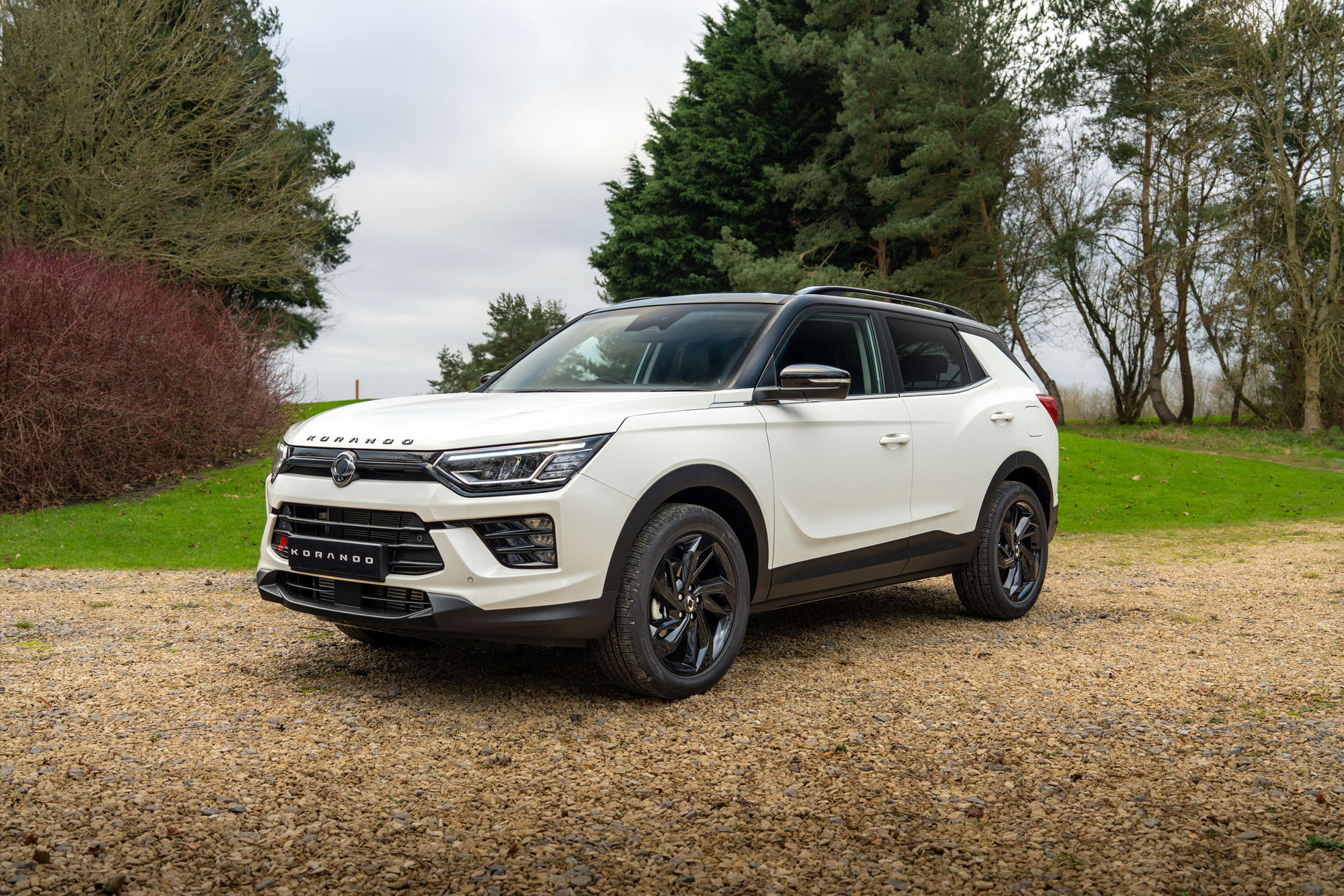
65. KGM Korando
An elderly SsangYong that survived the switch to KGM branding. Roomy and well equipped, it makes even MG’s HS look pricey, but the MG is faster, more frugal and has a hybrid option. You can mate the only engine, a 161bhp 1.5, with an auto for just a grand extra, but that’d be like letting a bunch of 10-year-olds wash your car cos they’re only charging £3 and discovering later they must have had an escape lane’s worth of gravel in their bucket and a sponge made of sandpaper.
What do you gain by going for the manual?
Economy improves from an outrageously bad 35mpg to a merely terrible 37mpg.
What do you lose by going for the manual?
You remove another reason to wish you’d bought MG’s much better HS instead.
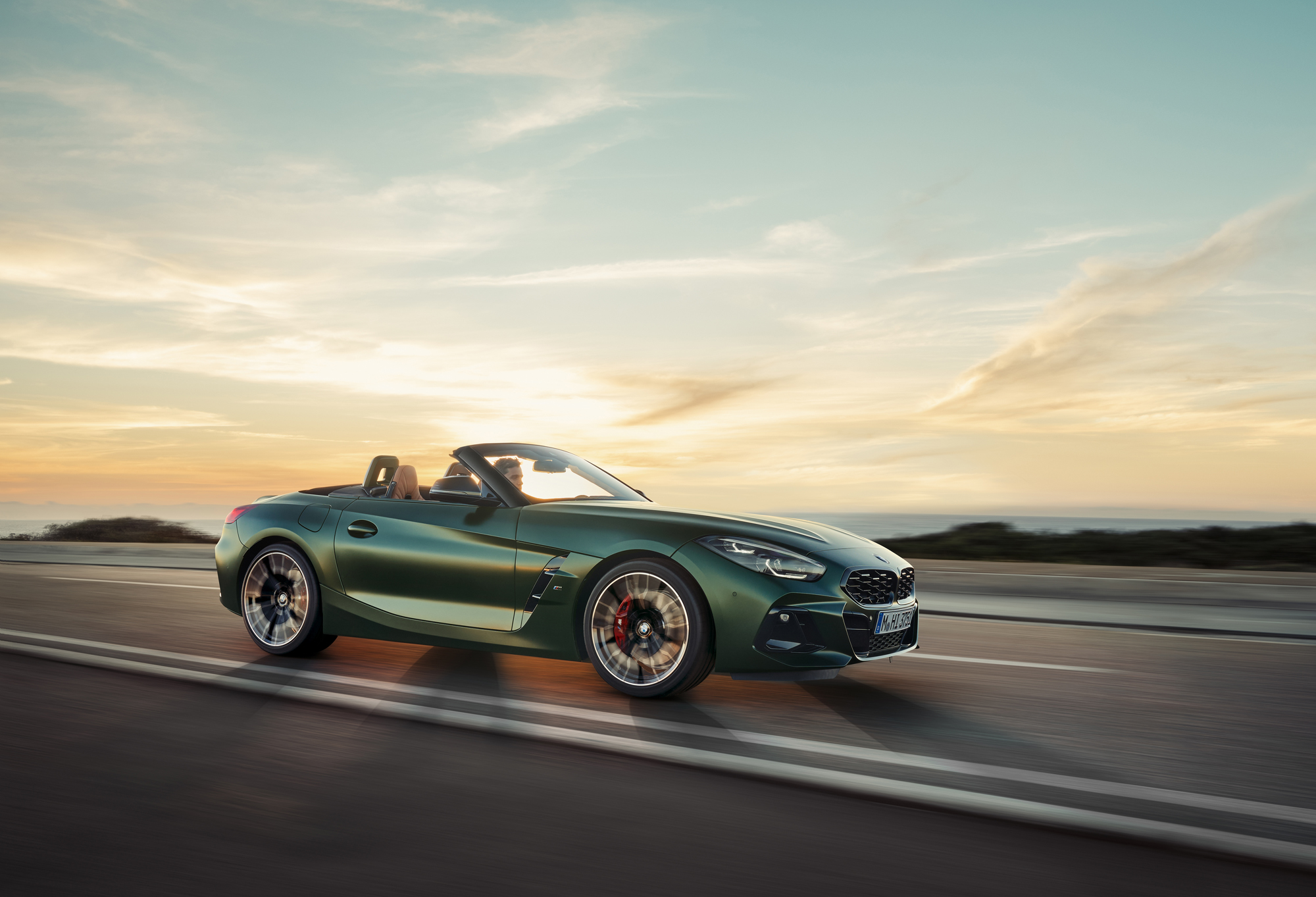
64. BMW Z4
The Z4’s never quite been a proper Porsche Boxster rival, but the latest 335bhp 3.0-litre six version with the ‘Handschalter pack’ and manual gearbox comes closest. The clutch adds engagement that was sorely missing before, and BMW has even stiffened the anti-roll bar mounts and tweaked the steering for this version. The Z4 dies in 2026 along with its Toyota Supra twin. Feels like a GT someone threw a manual gearbox at, but you can’t deny the appeal.
What do you gain by going for the manual?
More connection, better steering feel, and a proper sense of occasion.
What do you lose by going for the manual?
A bit of the luxury-car polish – but you won’t care when you’re grinning like a fool.
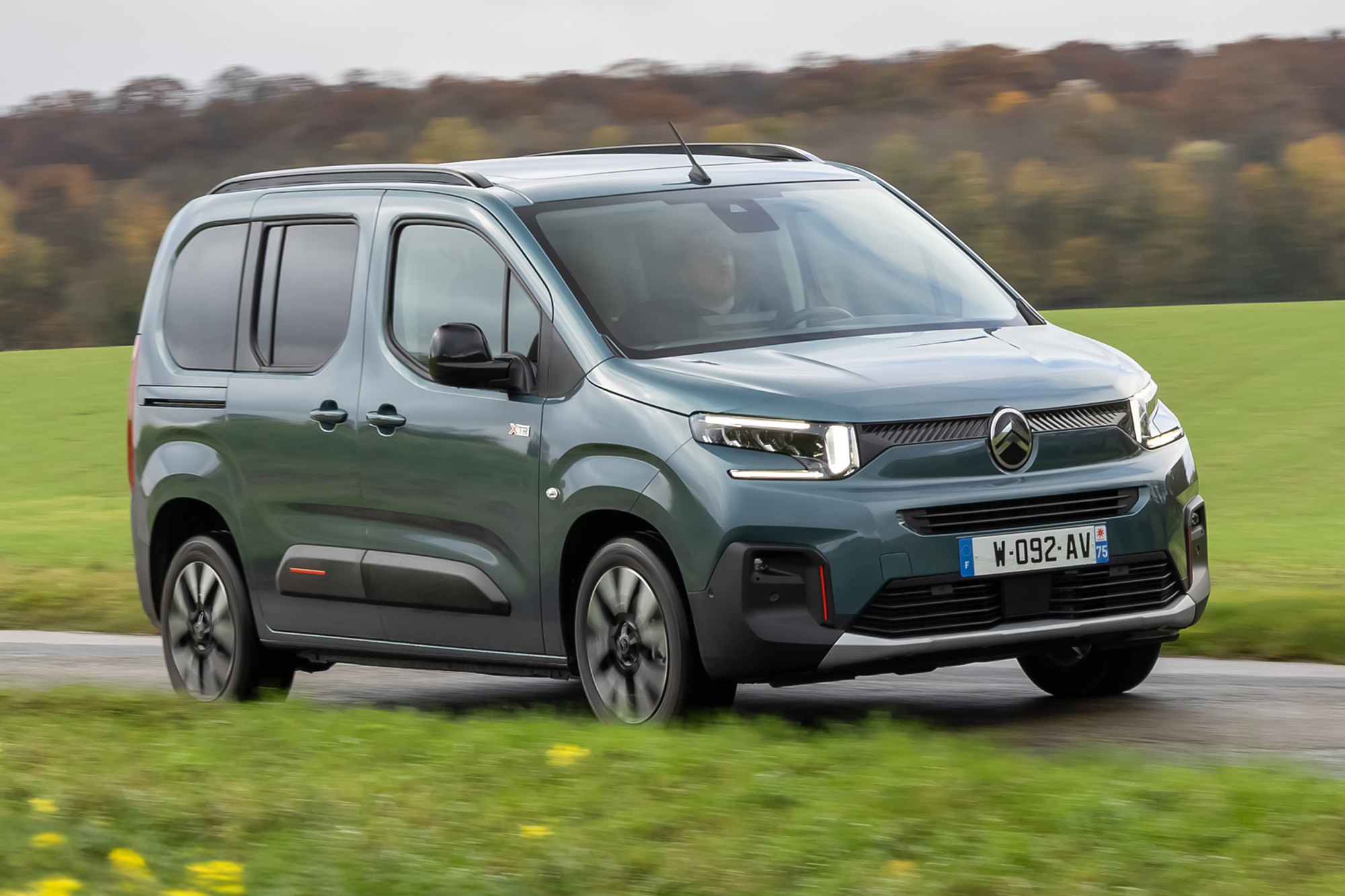
63. Citroën Berlingo
Citroën’s van-based MPV comes in electric and combustion flavours, plus a choice of transmissions for the fossil-fuel munchers. The 128bhp, 1.5-litre diesel 130 is auto-only, but the base 99bhp diesel and 109bhp 1.2-litre petrol keep the manual vibe alive for families who like to row their own. You might call them the driver’s choice but the modest grunt and soft suspension mean the only hustling you’ll feel like doing is at a Sunday car-boot sale.
What do you gain by going for the manual?
Decent torque control for towing or fully loaded family trips.
What do you lose by going for the manual?
A layer of pretence that you’re not driving a van with ideas above its station.
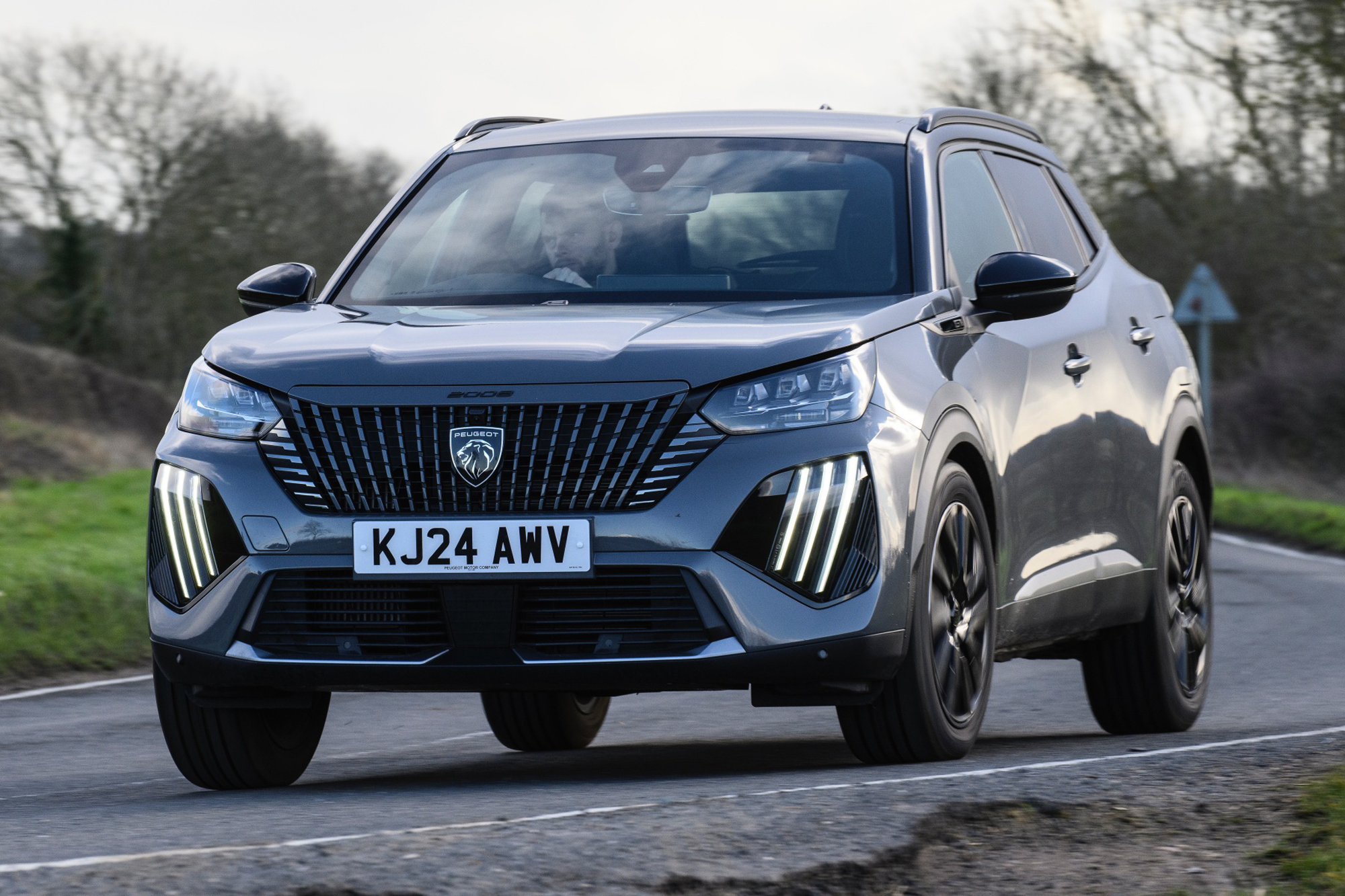
62. Peugeot 2008
The 2008 diesel belched its last a while back, but the phenomenally successful second-gen crossover still offers a 99bhp 1.2 PureTech 100 petrol with a six-speed manual for drivers who think gears shouldn’t roam free and electricity is the devil’s work. It needs to work harder here than in the 208, mind, and you can only get it in basic Allure trim. Logic says go for the 129bhp 130 hybrid auto, but the 100’s smooth manual and light clutch are simple pleasures.
What do you gain by going for the manual?
Better economy and less chance of developing DVT in your left leg.
What do you lose by going for the manual?
The auto-only 130 lops a very noticeable 1.6sec from the 62mph run.
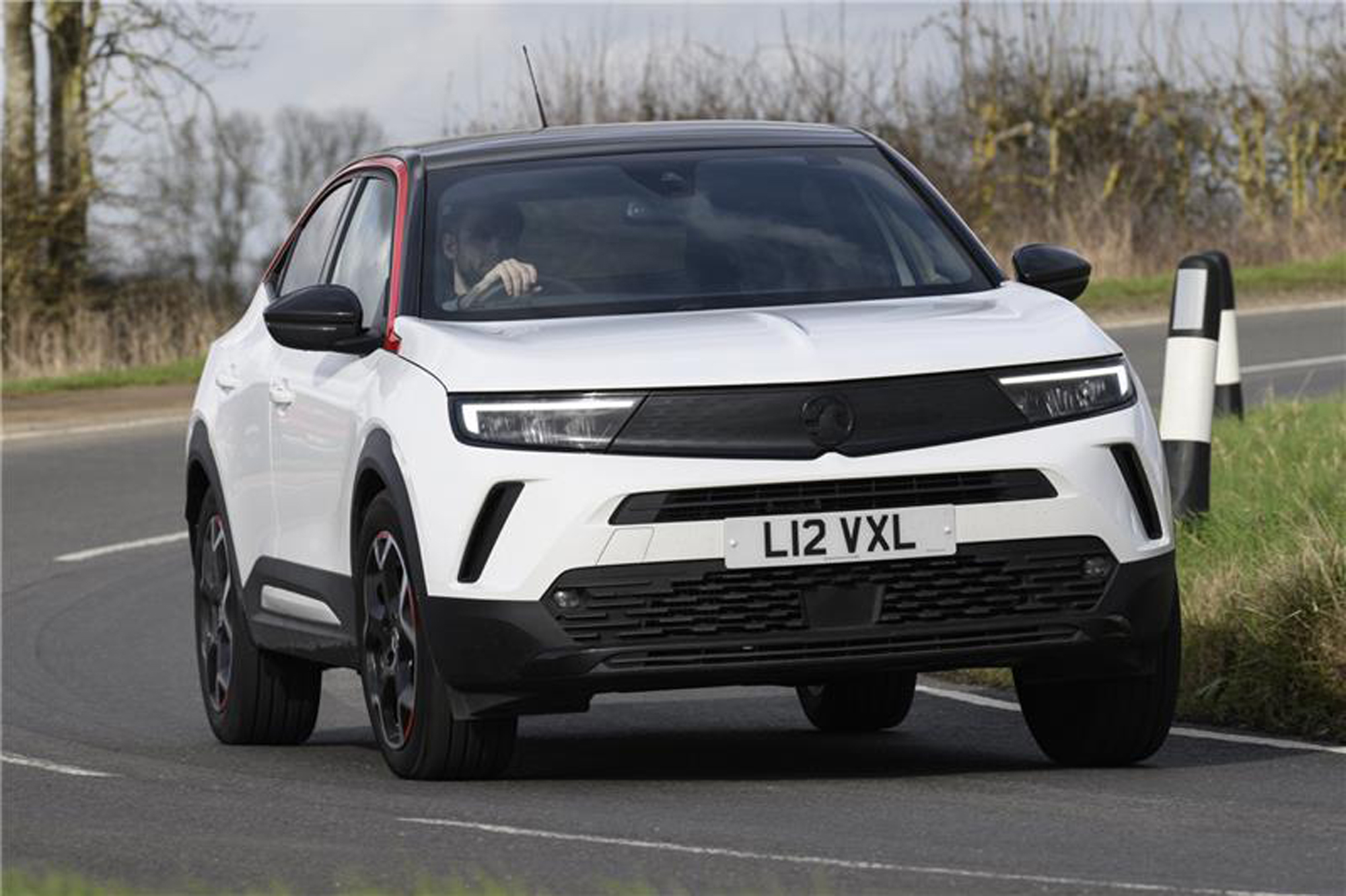
61. Vauxhall Mokka
The Mokka’s gone trendy and electric, but even flashy new 277bhp GSE trim can’t convince us the EV’s the best option. Why? Because the 134bhp 1.2-litre turbo triple – which previously cost extra – is now the base engine, adding some default Puma-beating straight-line pep to what’s otherwise a very style-led crossover. You can hook the same engine up to an eight-speed auto but it’ll cost you 6bhp and almost as many miles per gallon, plus £1650 at sign-up.
What do you gain by going for the manual?
A cheaper buy-in and a small spark of driver involvement.
What do you lose by going for the manual?
The auto’s smoother and no slower despite the smaller pony count.
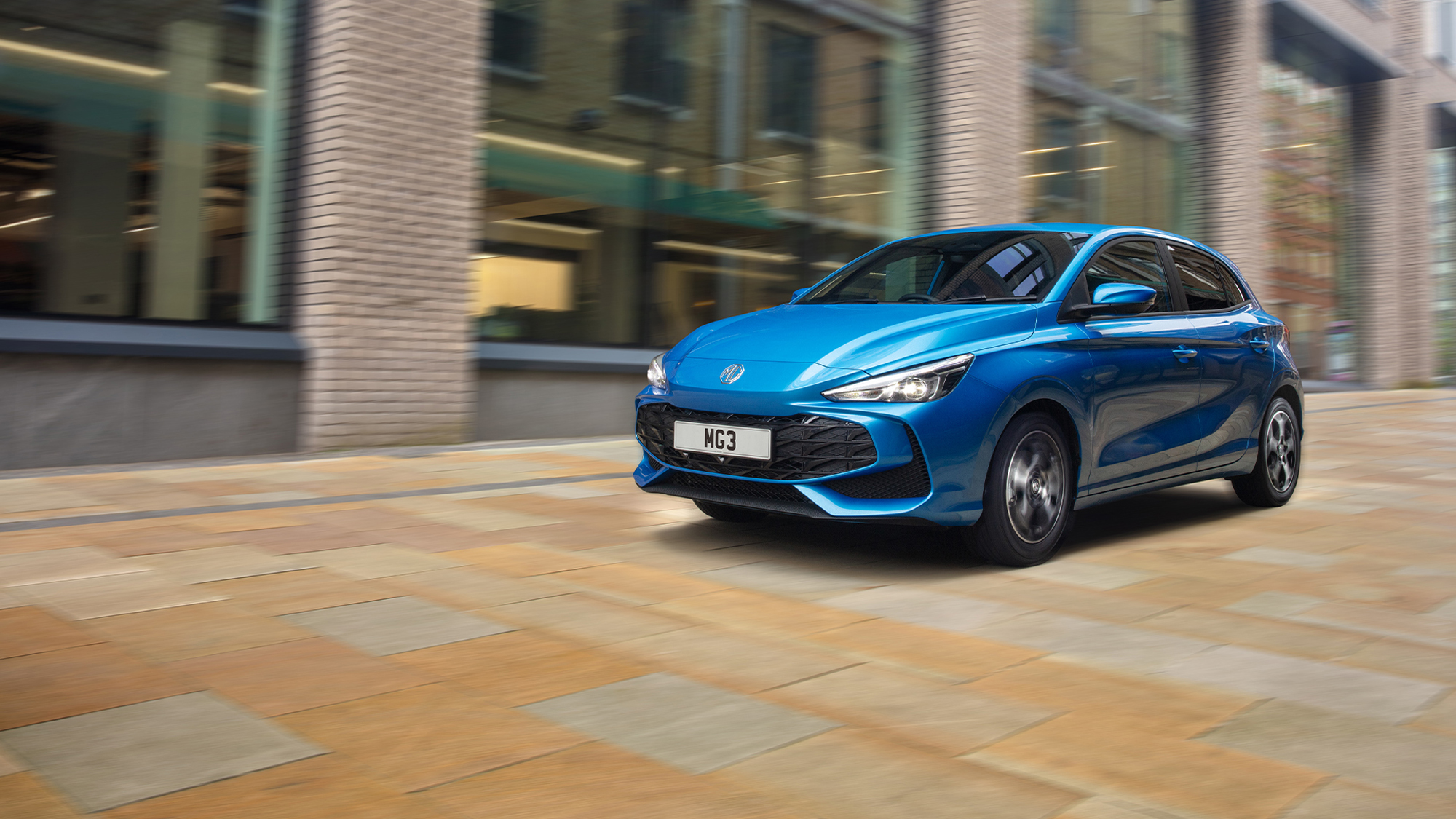
60. MG 3
Hybrid power helped the new, cheap and speedy (£20k, 8.0sec 0-62mph) MG 3 make headlines last year, and for a while that was all you could get. Now you can save £2k by ditching the electric bit and three-speed auto for a non-hybrid 1.5 and five-speed manual. Power drops from 191bhp to 113bhp and the trip from zero to 62mph grows to 10.8sec, but only the much slower Dacia Sandero can beat it for value. Which would you touch with your bargepole?
What do you gain by going for the manual?
Two grand in your pocket and more control at your foot compared to the unresolved hybrid.
What do you lose by going for the manual?
The hybrid’s efficiency and the chance to surprise the odd warm hatch.
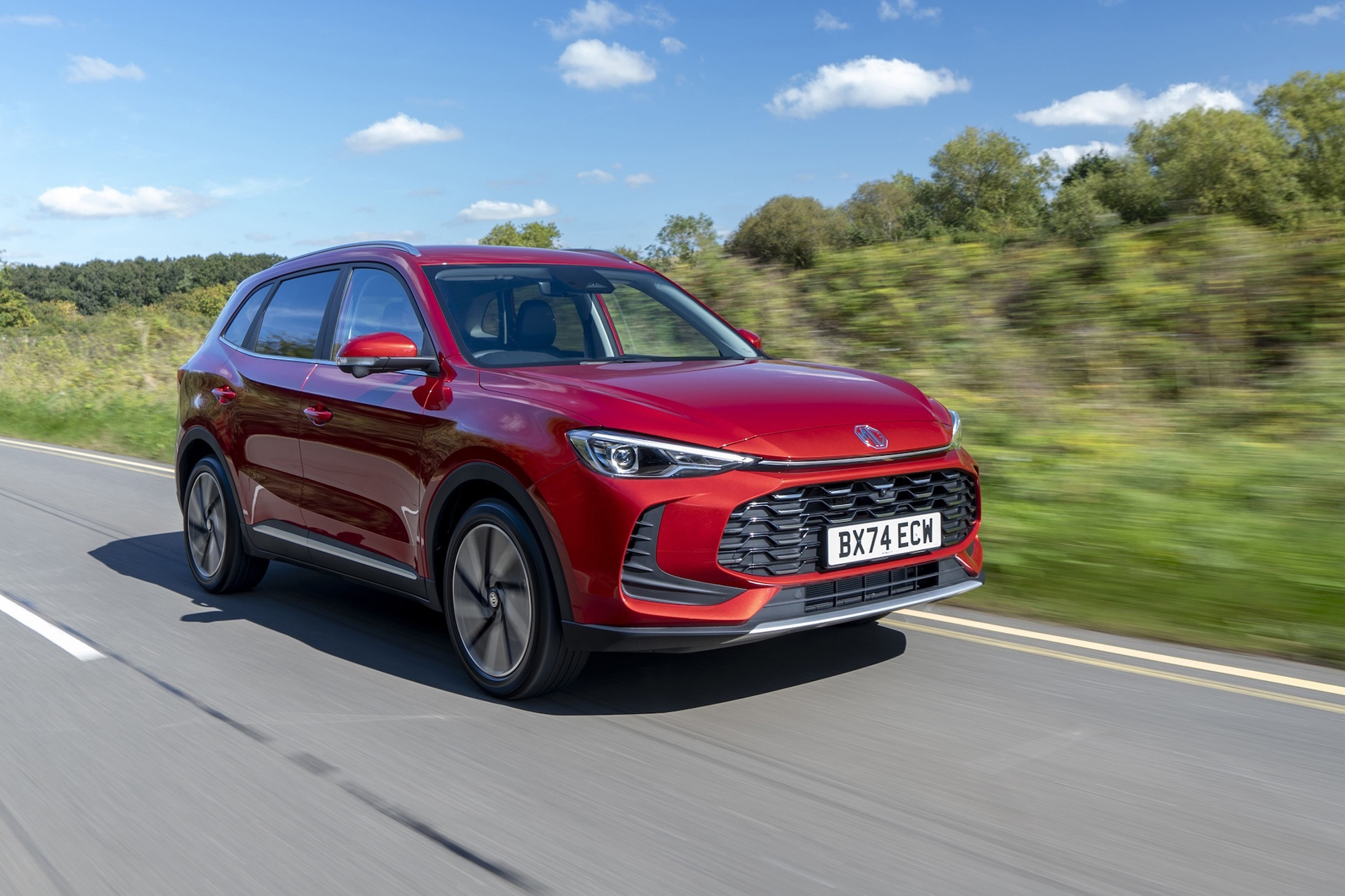
59. MG ZS
Hybrid power for non-hybrid prices. That was the ZS’s USP at launch, but MG now lets you cut out the electric assistance and £2500 from the bill. The hybrid- and electric-free set-ups are essentially lifted from the little MG 3 but it’s harder to make a case for the no-frills model here because the drawbacks are magnified. You’re going to have to really need the cash or be desperate to decimate the performance of a car that’s short on dynamic pluses anyway.
What do you gain by going for the manual?
A mechanical connection even MG’s £60k Cyberster sports car can’t match.
What do you lose by going for the manual?
Potentially entire hours from your life – it’s a tragic 4.0sec slower to 62mph.
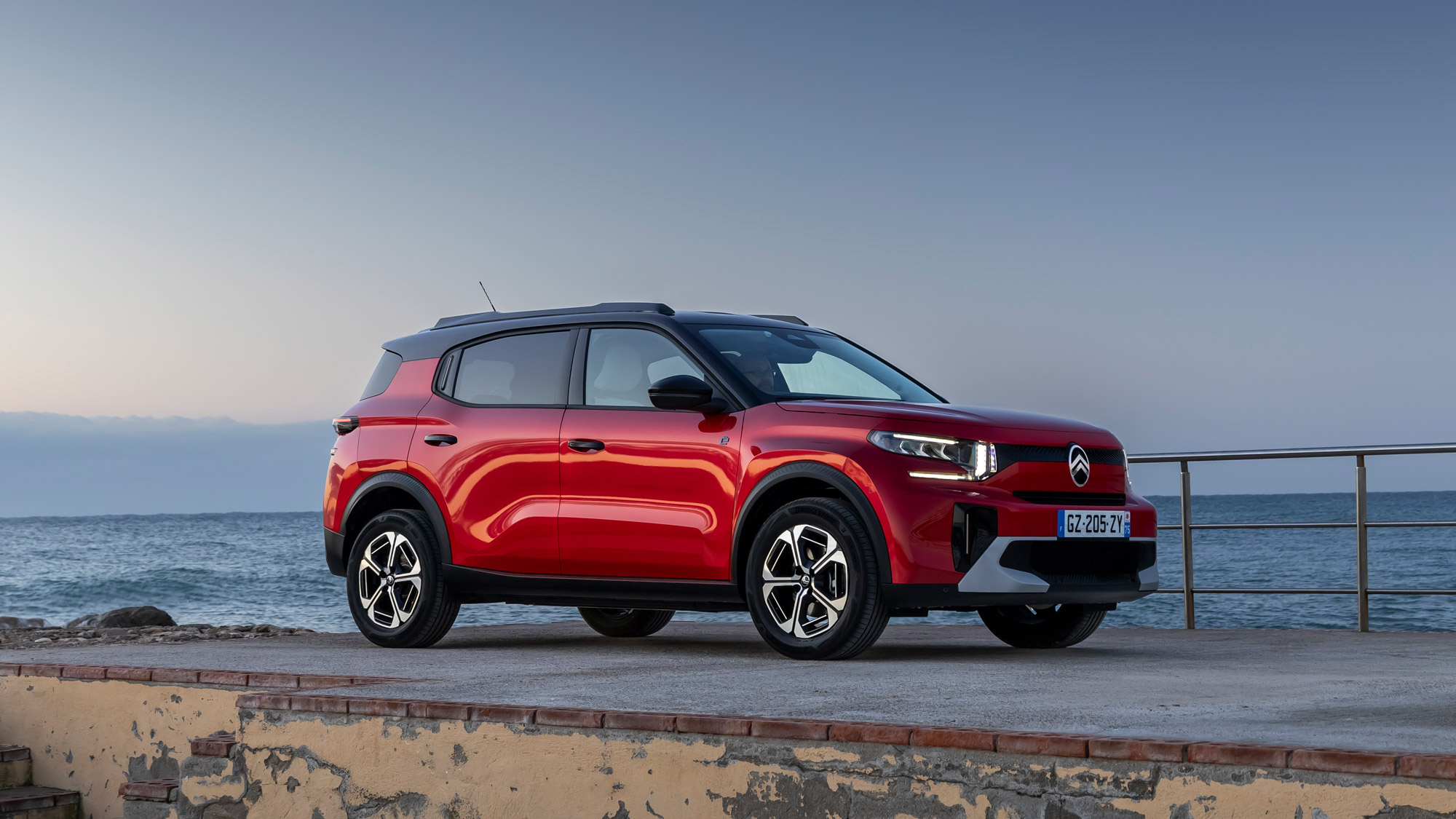
58. Citroën C3 and C3 Aircross
Once a cute supermini, now a mini-MPV crossover, the latest C3 (and its long-wheelbase seven-seat Aircross twin) is practical, cheap and full of French quirk. The 99bhp petrol version gets a five-speed manual; upgrade to the mild hybrid and you’re stuck with an auto.
What do you gain by going for the manual?
The cheapest ticket into new Citroën ownership, and a car that’s slightly less dull.
What do you lose by going for the manual?
You’re limited to basic Plus trim. Want the Max version and its fancy kit? You’ll need the auto.
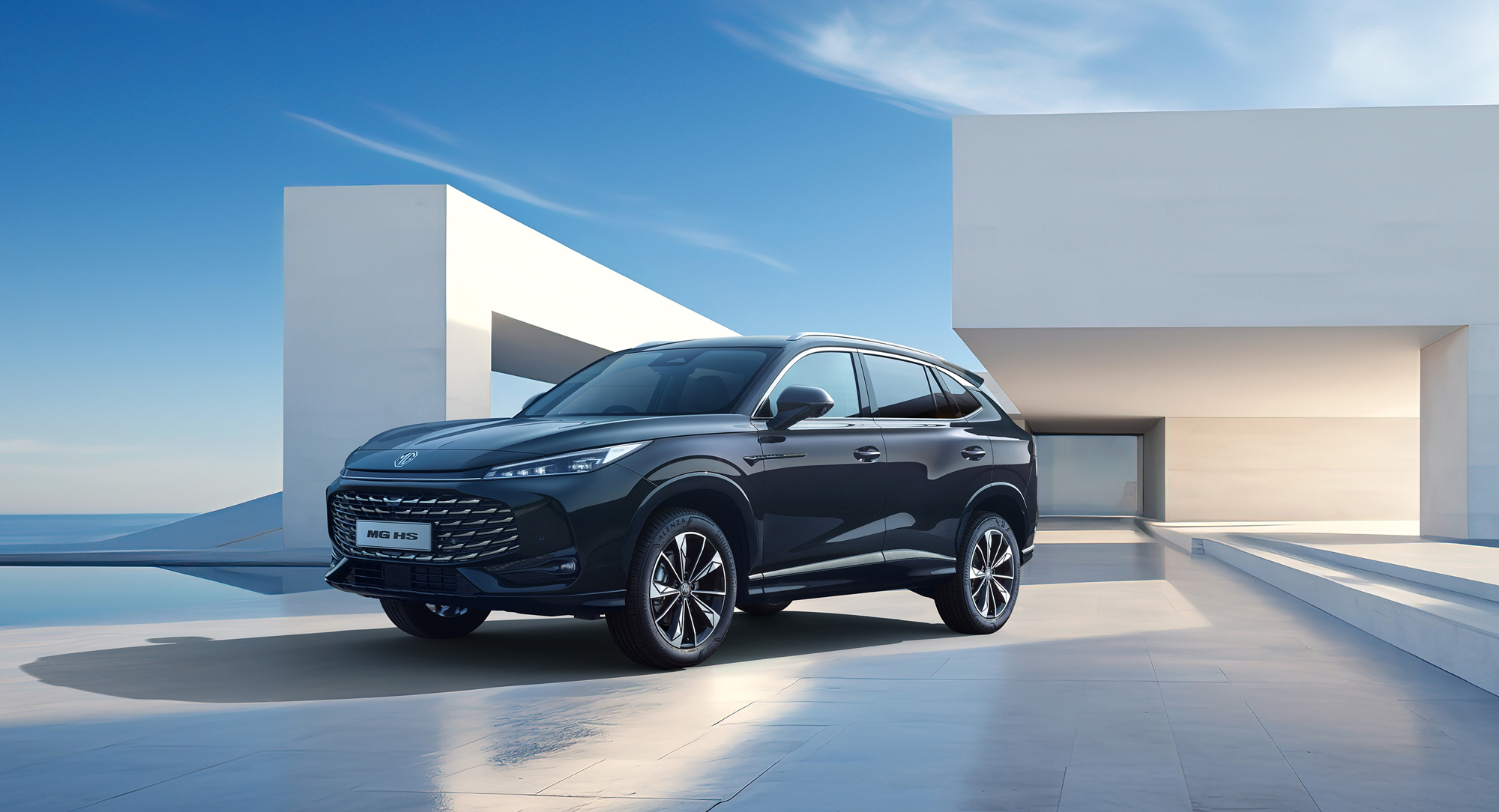
57. MG HS
Arguably Britain’s best-value PHEV, the HS Plug-in Hybrid undercuts rivals by thousands and outwits them with 306bhp of muscle, a claimed 75-mile electric range and seven-year warranty. A base HS manual is a harder sell. Again, you’re getting a lot of car for the cash but the 167bhp un-electrified 1.5 feels rough and short on grunt. Still, it’s better than the same engine with the clunky DCT, and it’s cheaper too.
What do you gain by going for the manual?
You sidestep the hesitancy problems of the DCT alternative.
What do you lose by going for the manual?
Traffic comfort – the auto’s smoother and the clutch pedal’s no featherweight.
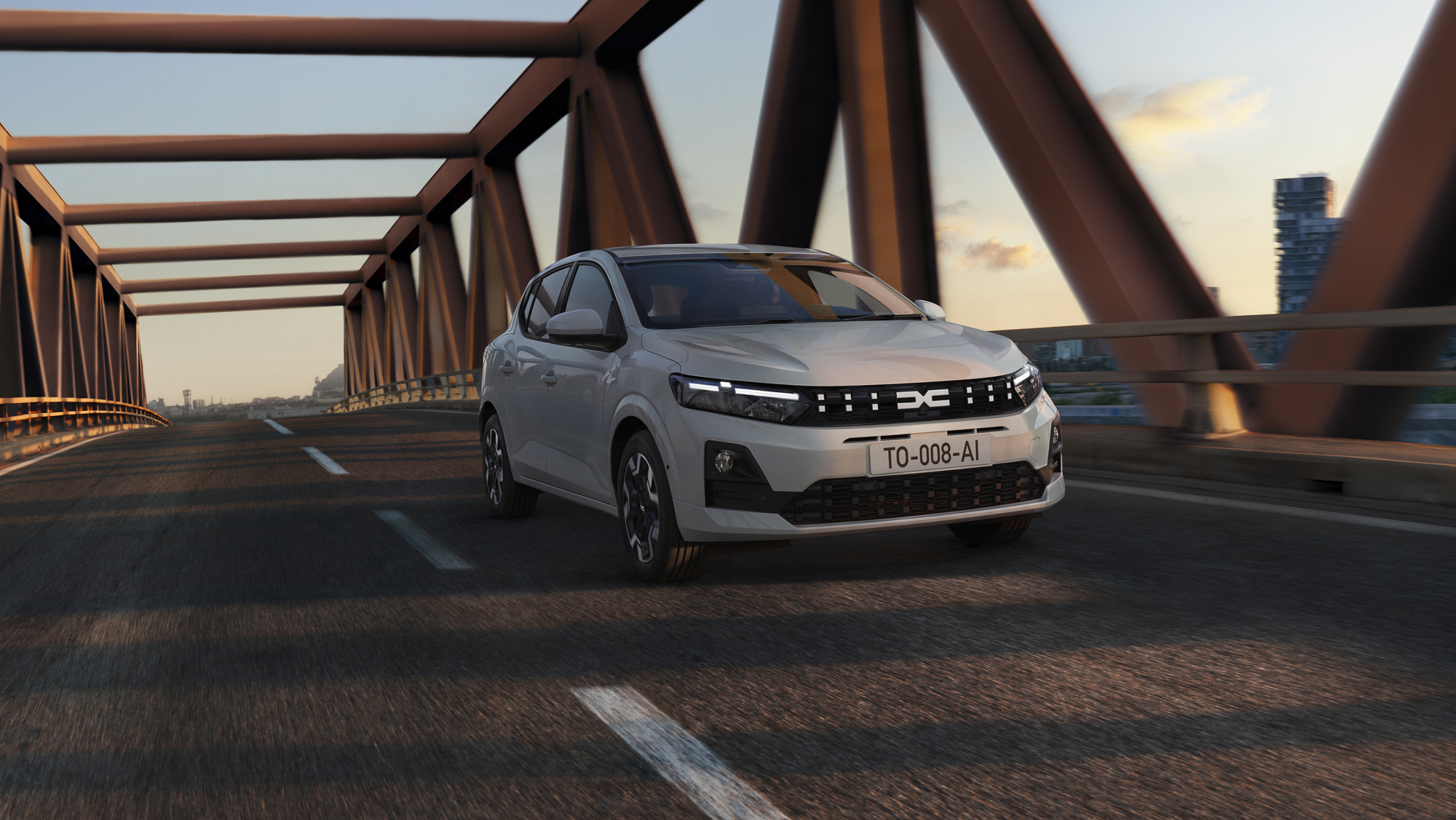
56. Dacia Sandero and Stepway
The Sandero is a sales juggernaut, Europe’s favourite car by some reckonings, and its manual ’box can claim a big chunk of credit. Okay, so the popularity has less to do with Dacia buyers being unable to resist heel-and-toeing every downchange into the Lidl car park and more to do with them being the kind of misers who set their thermostats to 12ºC and appreciate value above all else. But a manual Sandero is best, and not just on price.
What do you gain by going for the manual?
A bargain sub-£16k bill and 12.0sec to 62mph instead of a yawning 14.
What do you lose by going for the manual?
Diddly. A manual is the essence of a car that doesn’t even have an info screen in base form.
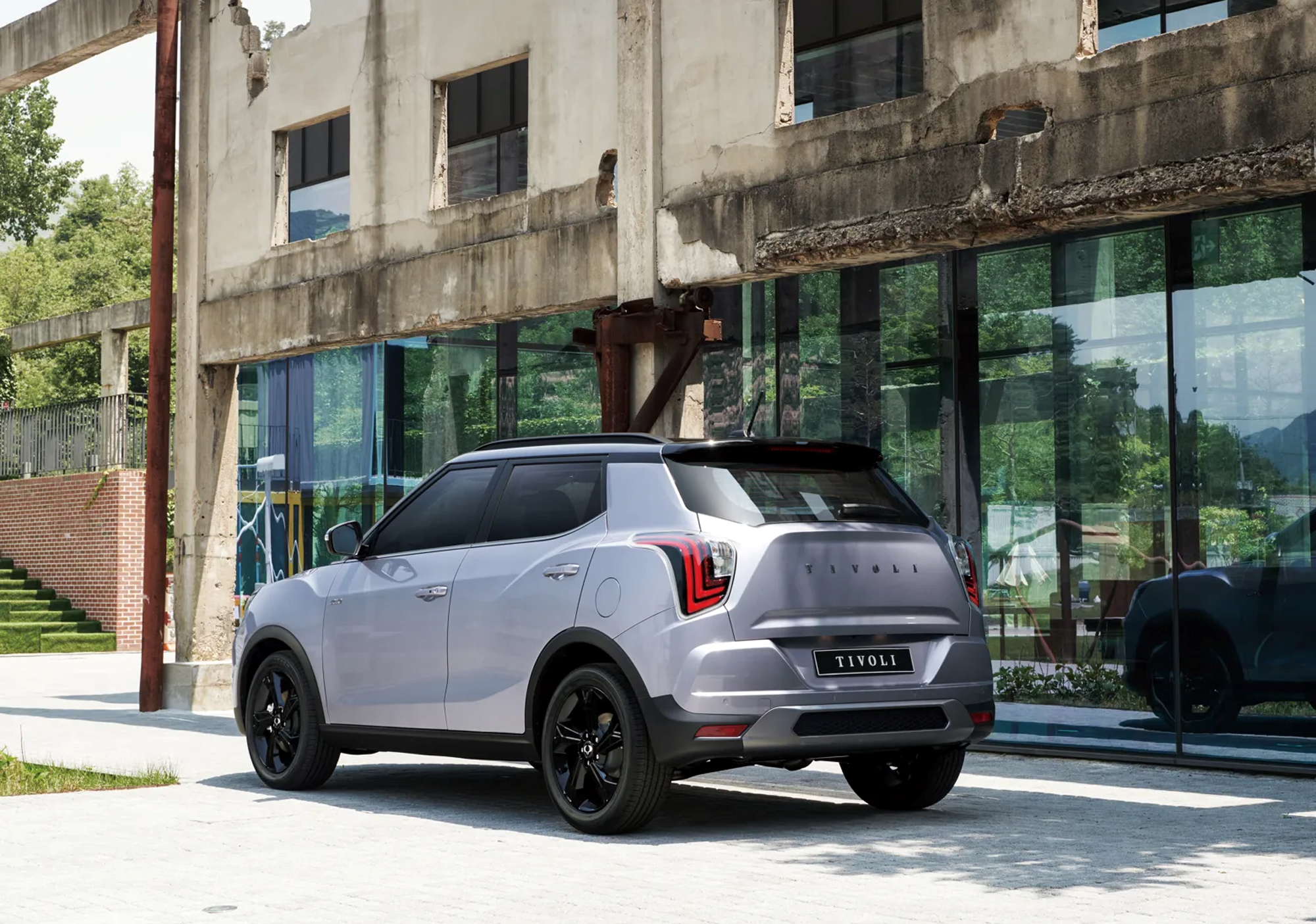
55. KGM Tivoli
Once a SsangYong, now a KGM, the Tivoli remains a budget Renault Captur rival. Its sole engine is a thirsty 161bhp 1.5 that hasn’t wrapped its head round hybrid tech yet, but has bags of energy and comes as standard with a six-speed manual. It’s a great ’box to row, and a high point in a car that’s mostly subterranean.
What do you gain by going for the manual?
A rare Tivoli plus point and more torque: 207 instead of 192lb ft.
What do you lose by going for the manual?
Nothing; the auto couldn’t be less responsive if it had locked-in syndrome.
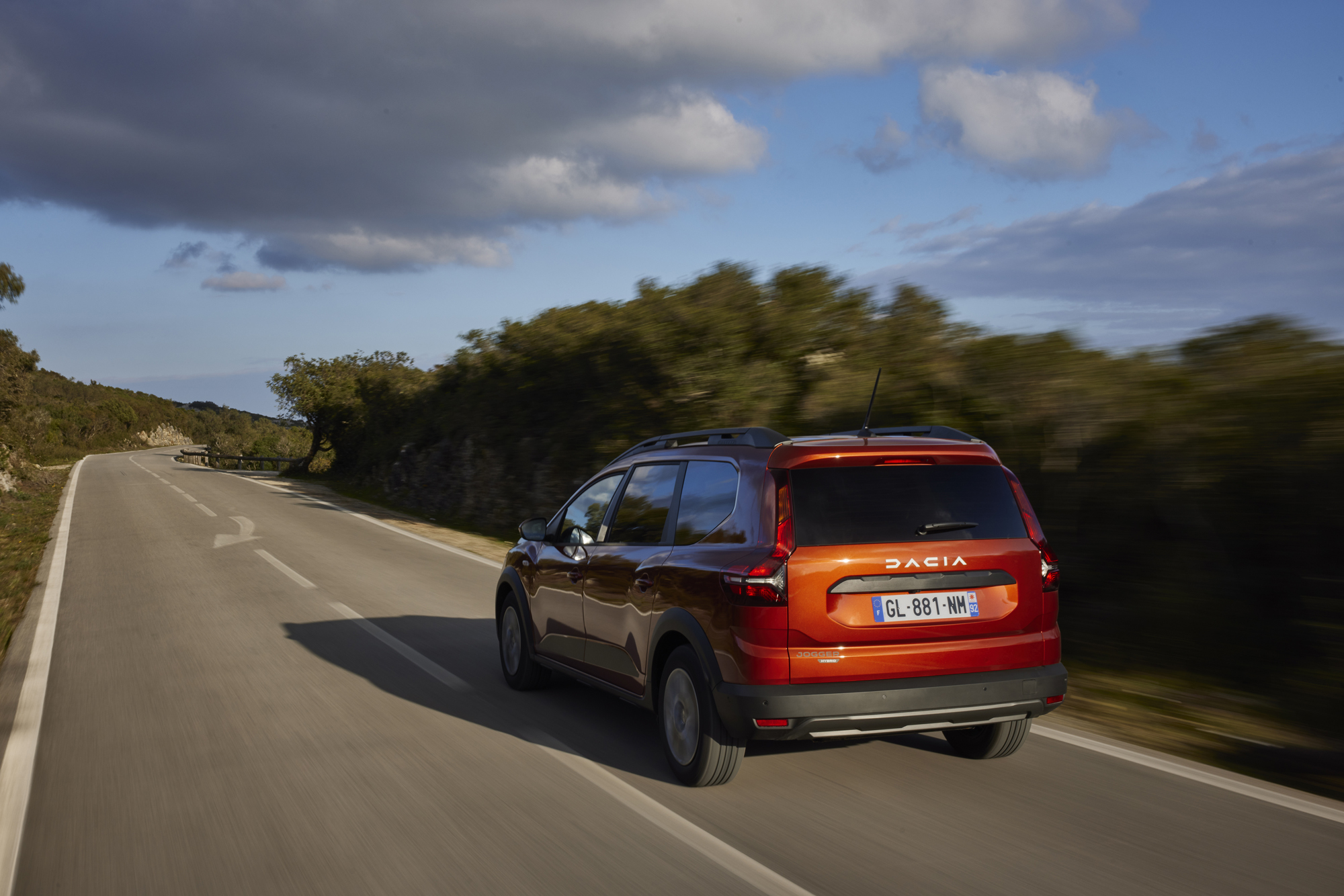
54. Dacia Jogger
A seven-seater for budget-focused folk determined to retire before they’ve sprouted a single grey hair, the bargain-priced Jogger jogs on just fine with its base 109bhp 1.0-litre engine. Stir the compulsory six-speed manual vigorously enough and you’ll hit 62mph in 11.2sec, but the boosty midrange surge means you’ll need the foot-eye coordination of a keepy-uppy champ to ensure it stays running smoothly. The TCe 140 Hybrid is much quieter, but that’s auto-only.
What do you gain by going for the manual?
It’s hard to argue with a £3k saving in this segment.
What do you lose by going for the manual?
The auto’s faster, easier and more frugal.

53. Fiat 500
Fiat dropped a clanger when it axed the ancient but still popular combustion 500 to focus on the posher 500e EV. Punters quite literally didn’t buy it, and Fiat was forced to retro-fit the old car’s 69bhp, mild-hybrid 1.2 to the newer electric platform. With no turbo to flesh out the torque curve you’ll be changing gear like an HGV driver, but what would the world be like without a small Fiat to rag mercilessly every time you hit the Hertz desk? Doesn’t bear thinking about.
What do you gain by going for the manual?
The 500e’s smooth body and smart dash, but 200 per cent more range and for ££££s less.
What do you lose by going for the manual?
The EV’s refinement and urban zip; fewer excuses for espresso stops.
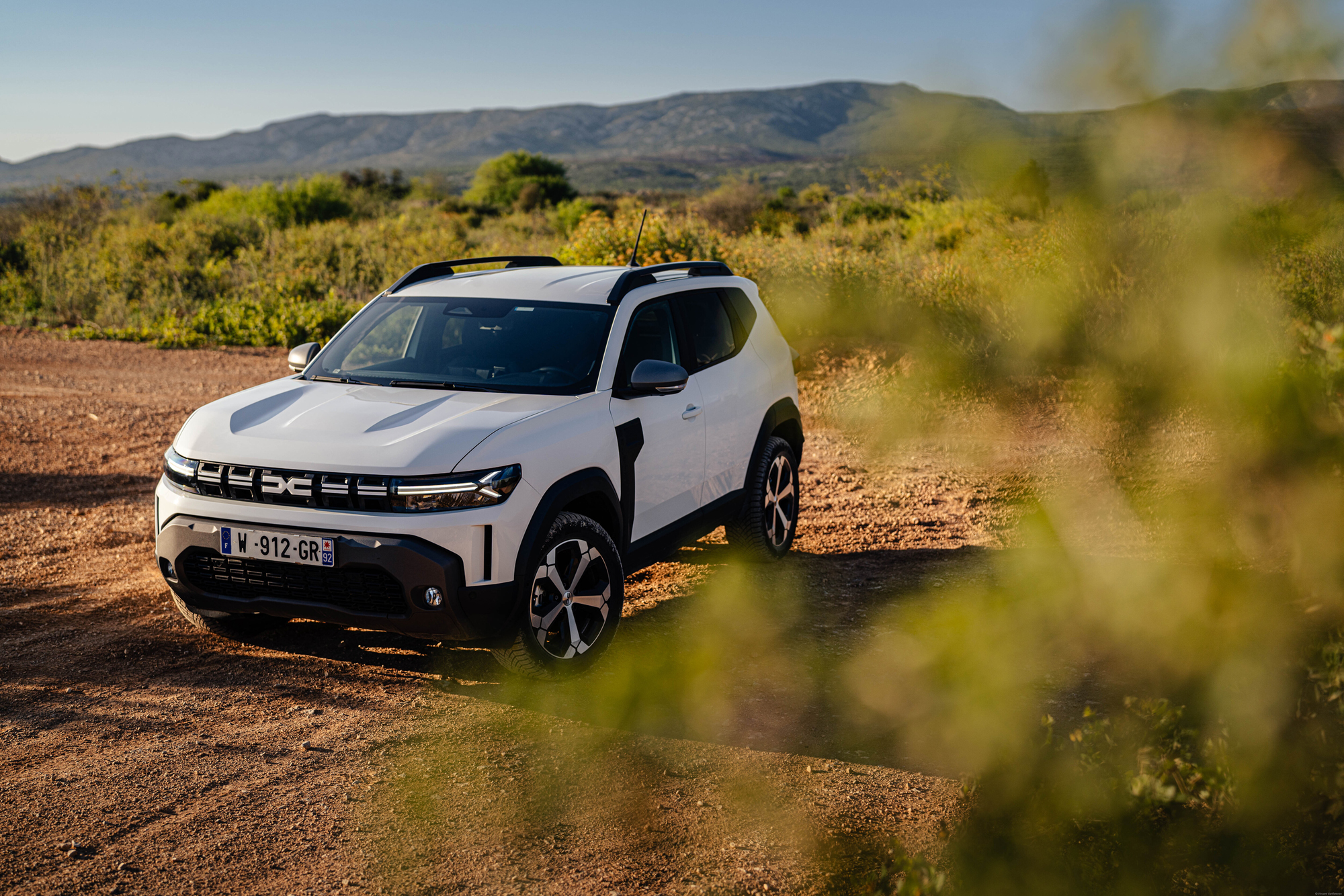
52. Dacia Duster
The Sandero might top Europe’s sales charts but it’s the Duster that made it socially acceptable to say you owned a Romanian Renault. The latest version looks tougher and more premium on the outside, but the Temu interior quality makes even MG’s bargain basement ZS feel classy. We say own the cheap vibe and stick with the base 128bhp, 1.2 and its mandatory manual. The shifts’s a little notchy but the ratios are neatly stacked.
What do you gain by going for the manual?
Simplicity, savings, and genuine control off-road.
What do you lose by going for the manual?
Access to the full hybrid engine, but that’s an extra £3k anyway.
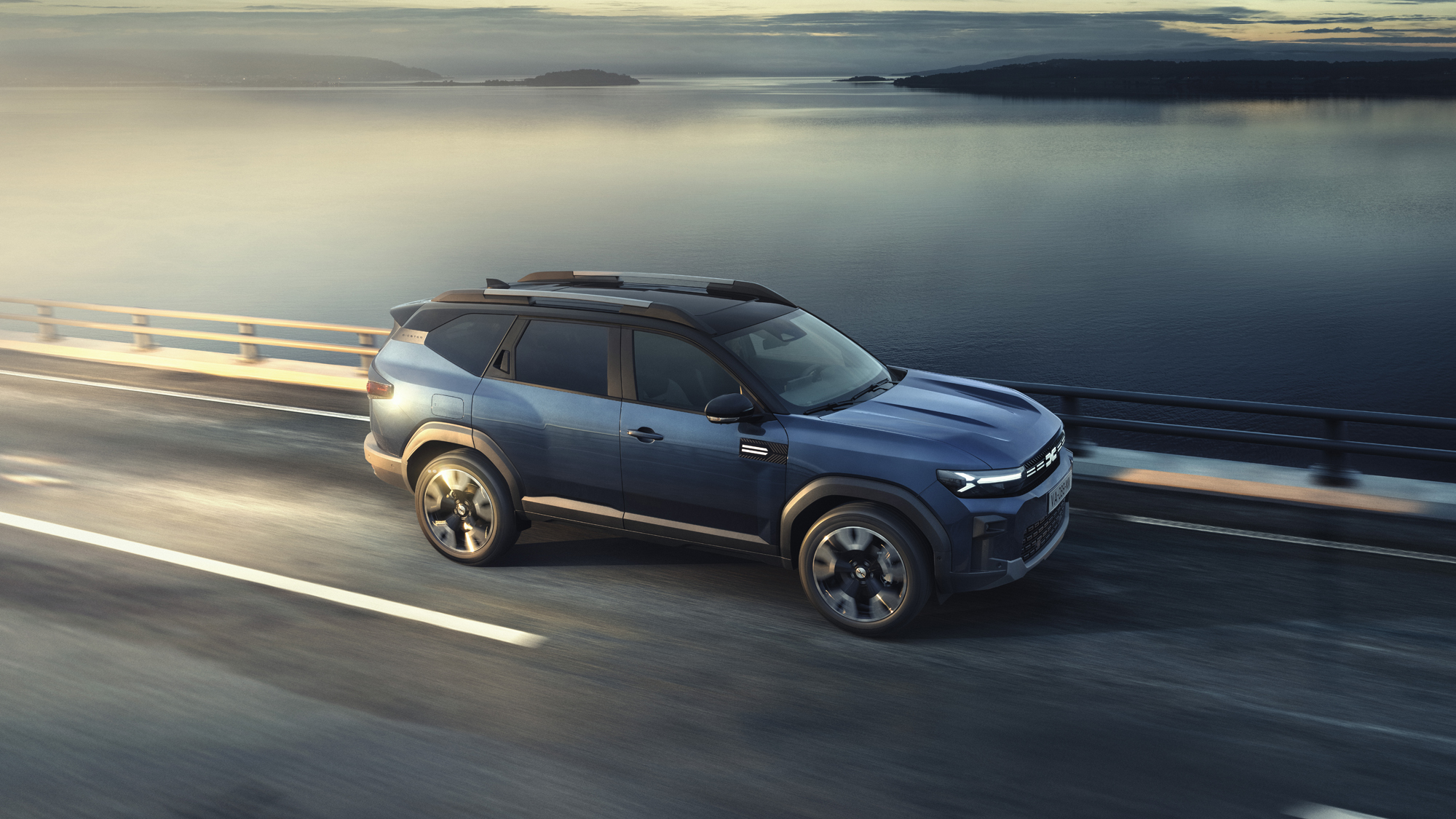
51. Dacia Bigster
This overgrown Duster pushes Dacia into new territory with a Kia Sportage-sized footprint and dual-motor hybrid powertrain cribbed from the Renault mothership. The cabin quality gives petrochemical byproducts a bad name, but since two of three engines don’t just come with a manual, but insist on it, we’ll let it slide. Again it’s the purest set-up, the 138bhp 1.2 mild hybrid, that delivers the most and costs the least.
What do you gain by going for the manual?
A four-wheel-drive option. That’s off the table on the auto-only full hybrid.
What do you lose by going for the manual?
10bhp if you take that 4WD over the base 2WD MHEV. Keep it simple.
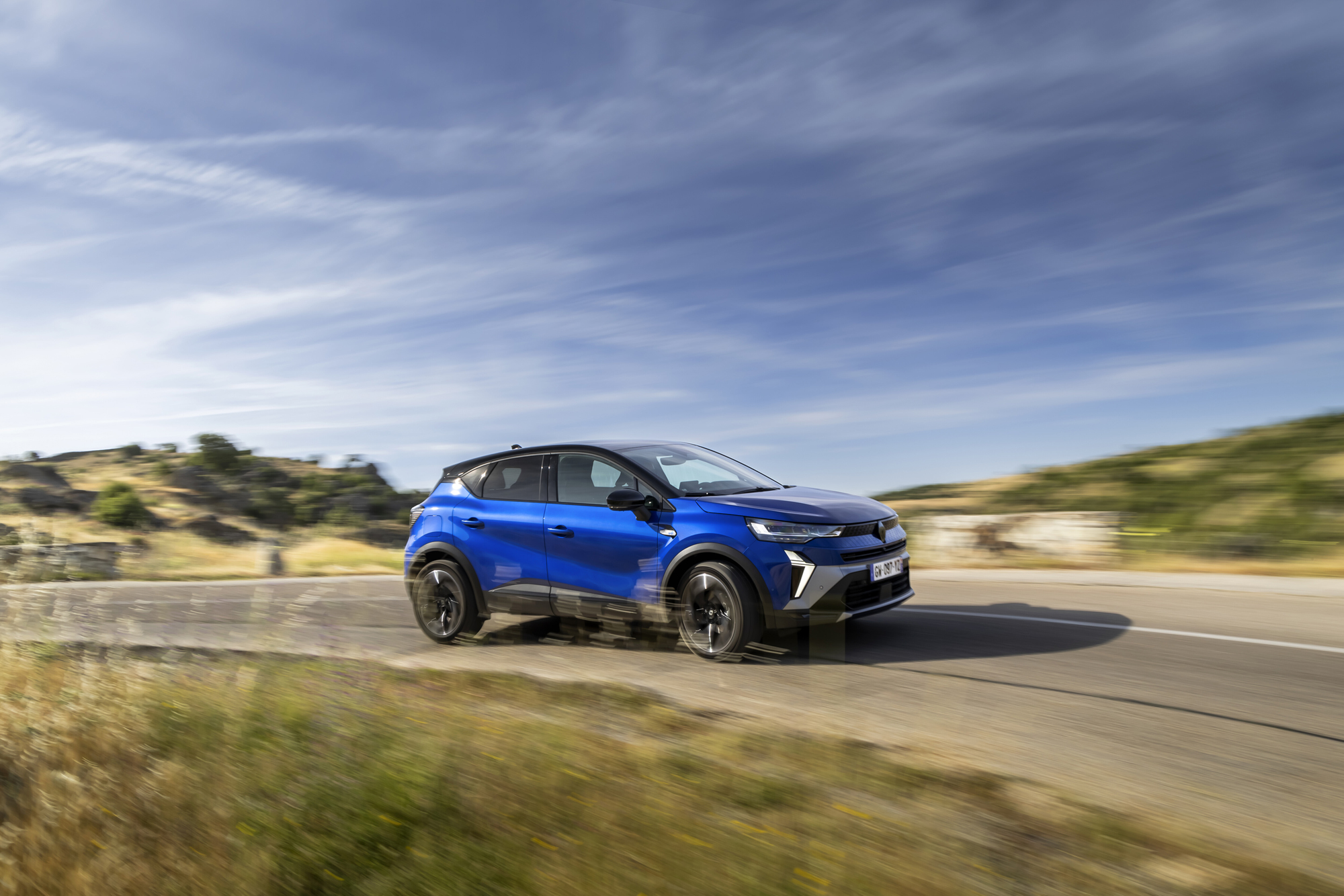
50. Renault Captur
What a difference a growth spurt makes. The Clio-based Captur’s range kicks off with the same 89bhp 1.0 triple, and again it’s backed exclusively by a six-speed manual. But here it’s so swamped by the crossover’s extra kerbweight you’ll be hunched over the steering wheel like a ’70s dad urging the thing on every time you attempt the simplest overtake. Even the biggest manual advocates might switch sides in the 14.3sec it takes to hit 0-62mph.
What do you gain by going for the manual?
A crossover-shaped hair shirt to prove how much you love changing gears.
What do you lose by going for the manual?
Only the 158bhp auto hybrid gets you access to fancy Esprit Alpine trim.
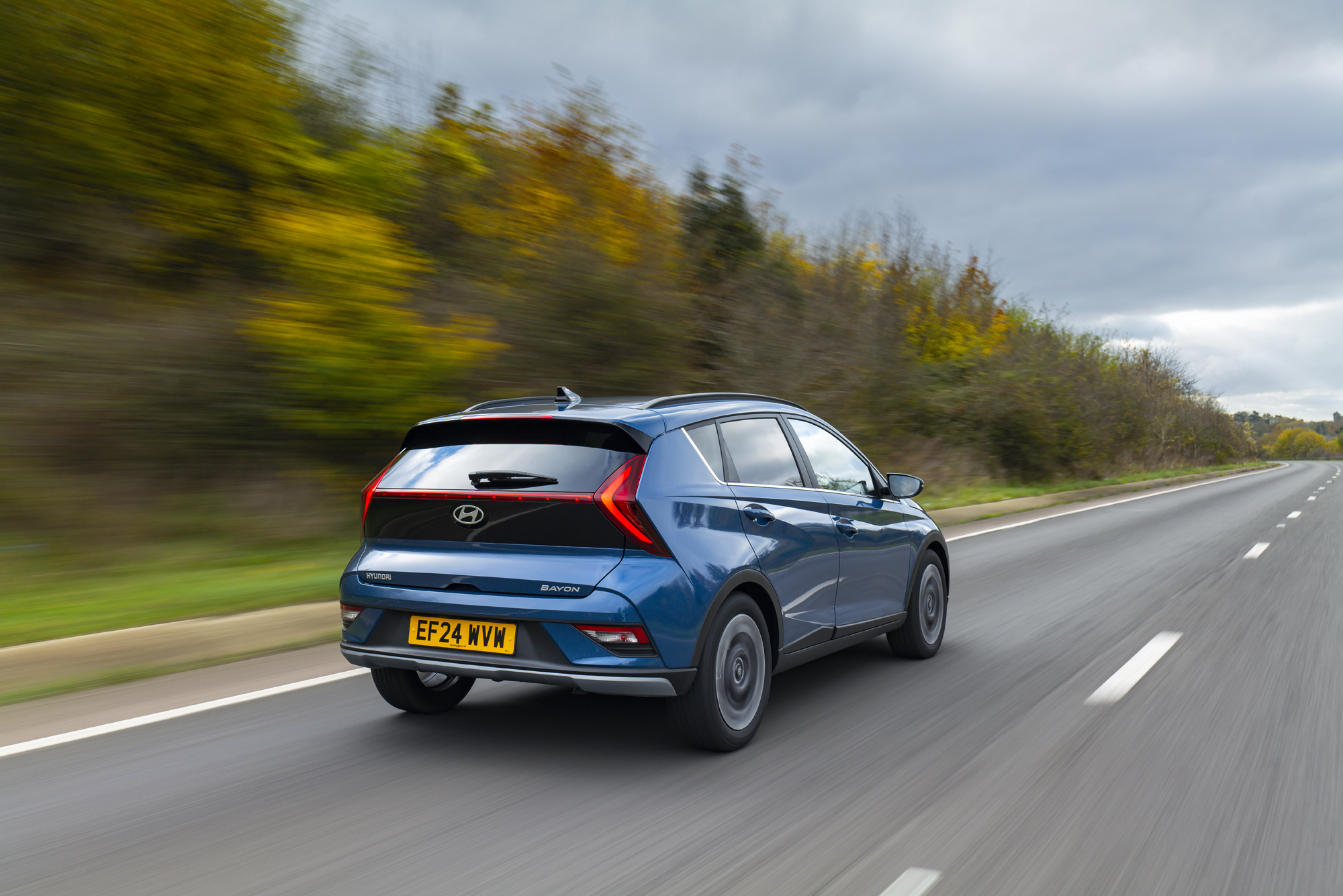
49. Hyundai Bayon
A crossover that forgot to cross, this forgettable and oddly low-riding spin-off of the respectable i20 hatch has no hybrid tech and only one engine. At least it’s a good ’un, a 99bhp, 1.0 T-GDi 100 that’s perky in town and just about copes away from it. Only the top-spec Ultimate trim gets Hyundai’s seven-speed dual-clutch option, so save yourself £3k-£4k by sticking with one of the two lower grades.
What do you gain by going for the manual?
The Bayon’s pretty dull, but throwing gears at the T-GDi isn’t.
What do you lose by going for the manual?
The DCT is a natural fit for a crossover with zero sporting pretensions.
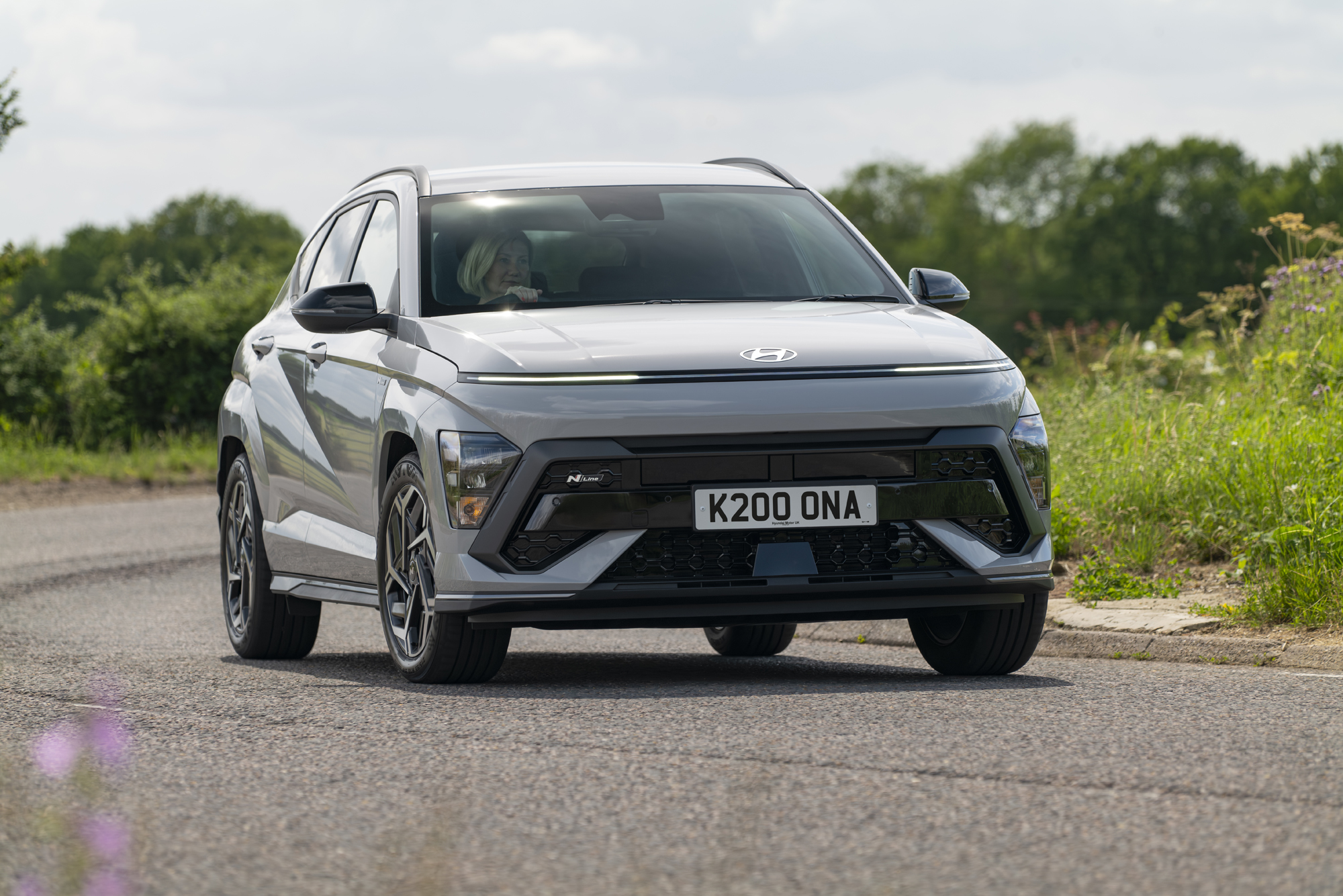
48. Hyundai Kona
The Kona’s RoboCop face looks interesting enough, but dead or alive you wouldn’t catch us choosing one over a Ford Puma. The gutless 99bhp 1.0 has disappeared from the line-up, so your only manual option is now the 138bhp turbocharged 1.6 – which was the best engine anyway. Sixty-two comes up in the same rubbish 10.2sec whether you go for the six-speeder or the optional twin-clutch ’box, but rivals are much faster, chew less fuel.
What do you gain by going for the manual?
The 1.6T is leagues ahead of the unboosted 1.6-litre hybrid auto.
What do you lose by going for the manual?
You’re limited to bottom-rung Advance trim, though that’s the sweet spot.

47. Jeep Avenger
Europe’s Car of the Year 2023, but that was the Avenger Electric, Jeep’s first EV. If you want manual gears you’ll need to forget about electrification altogether because even the two hybrids insist on a dual-clutch transmission. That leaves the base 1.2 and its 99bhp – not much, but then Jeep-lovin’ General Patton won the war with only 60. For £1k more, the mild-hybrid auto makes more sense, but the Avenger’s great manual shift will make you want to go back to basics.
What do you gain by going for the manual?
Less cost and mass: the mild hybrid weighs 108kg more.
What do you lose by going for the manual?
No 4WD, but who are you kidding? It’s a Pug 2008 in an Uncle Sam costume.
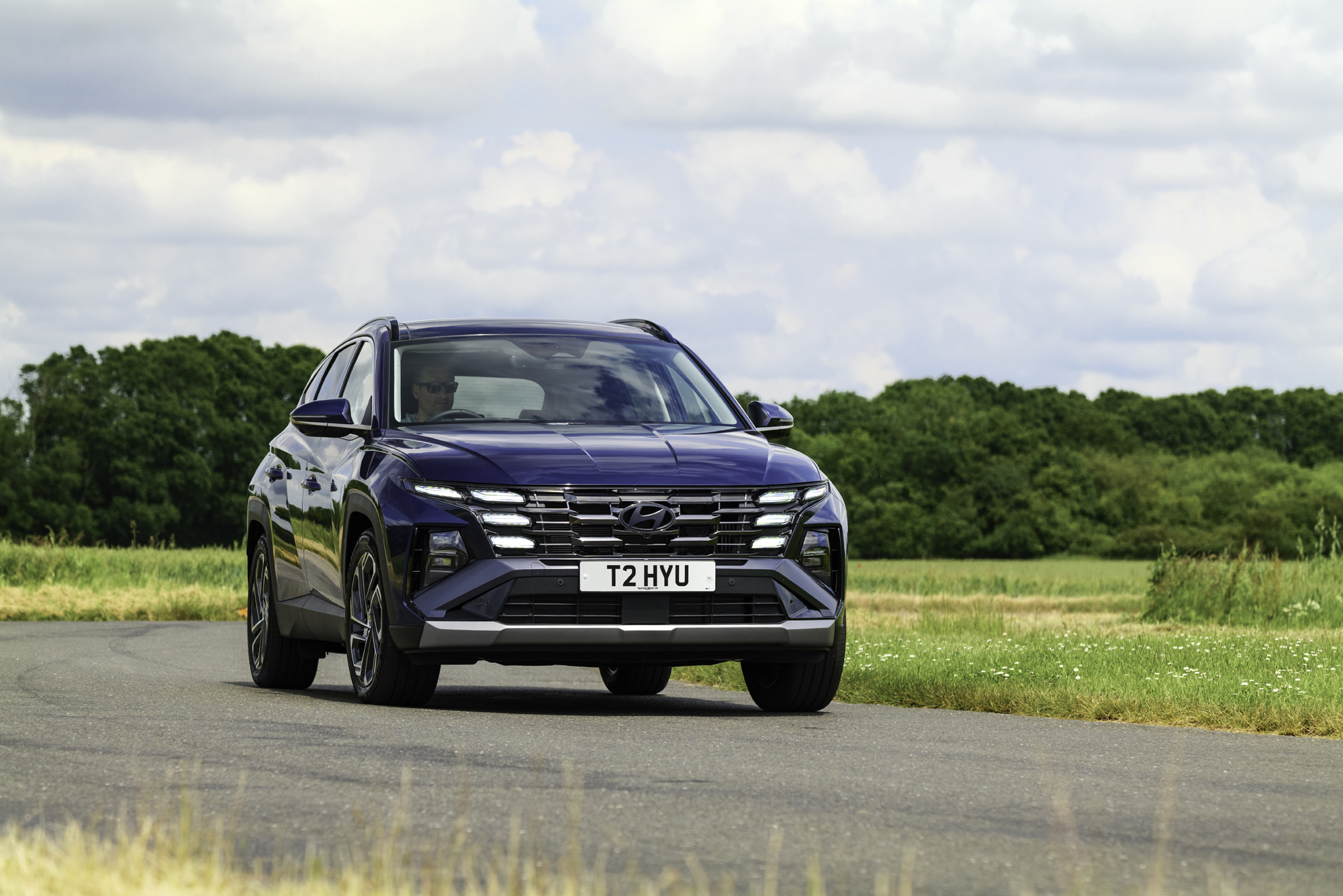
46. Hyundai Tucson
Nissan’s Qashqai and Kia’s Sportage dominate the UK’s small family SUV segment but the Tucson’s worth a look. You get to pair a 148bhp 1.6-litre turbo four with a manual transmission in every single trim level, and the shift quality slays the Nissan’s. Eagle eyes will spot that output’s down 10bhp, and the mild-hybrid system has gone too, but it’ll still break 10.0sec to 62mph. So will its Sportage cousin, mind, and that gets two years’ extra warranty.
What do you gain by going for the manual?
£1700 versus the DCT, and a better-than-average shift feel.
What do you lose by going for the manual?
All-wheel drive is reserved for hybrid/auto buyers.

45. Kia XCeed
The K4 has kicked Kia’s older Ceed into touch, but its XCeed crossover brother lives on and gets a new Kia face and interior soon. Until that update arrives you can still order the old ‘tiger-nose’ version, though manual choice is limited to the base 113bhp, 1.0-litre mild hybrid, which can also be optioned with a seven-speed DCT. The auto’s okay, and cheap at £1100, but we’d put that cash towards covering the £1400 jump from Pure to GT-Line.
What do you gain by going for the manual?
The XCeed isn’t exciting to drive, but the manual feels more responsive than the DCT.
What do you lose by going for the manual?
You can’t pair it with GT-Line S trim or the flagship 177bhp 1.6 turbo engine.

44. Kia Sportage
Britain’s second-favourite car – only the Ford Puma sells more – the Sportage doesn’t have the sharpest chassis or the cleverest seats. But as a package it’s so well rounded it’s a wonder it doesn’t just roll away. Kia axed mild-hybrid tech for this year’s facelift but the 147bhp 1.6 is still available with a choice of six-cog manual or a DCT with an extra ratio. Want 4WD or hybrid power? Then you’ll have to give up on those clutch dreams.
What do you gain by going for the manual?
A Sportage that remembered at the last minute that driving can be fun.
What do you lose by going for the manual?
Neither version of the 1.6T is speedy, but the DCT feels less slug-like.
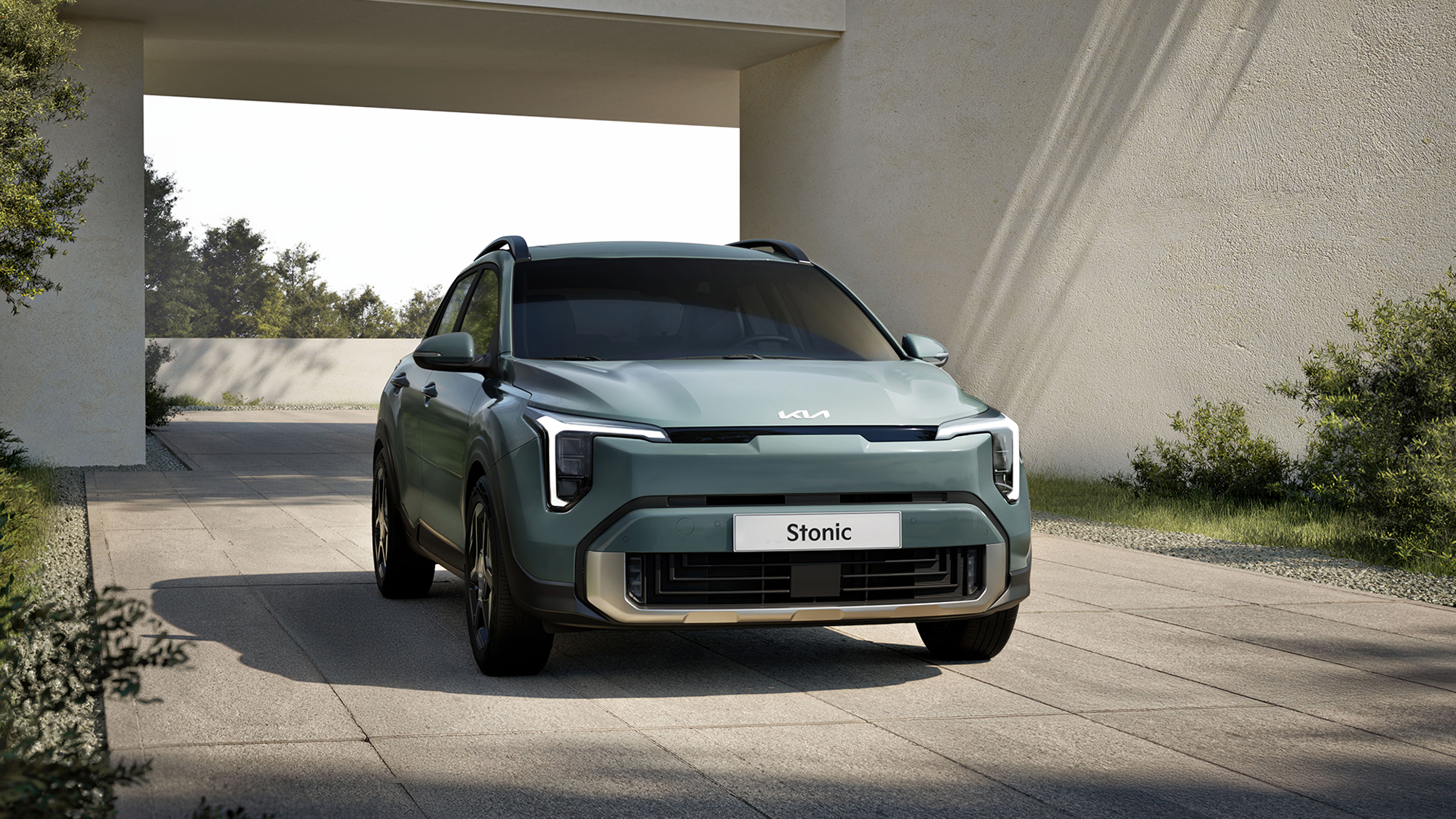
43. Kia Stonic
Finally updated with Kia’s current corporate face and dual 12.3-inch dash screens, the Stonic’s not the most practical crossover but it is surprisingly good fun to throw around. The six-speed manual attached as standard to the two available engines is fun too. There’s a base 1.0 triple with 99bhp whose ‘mañana’ low-rev push makes a teenager look motivated, and a mild-hybrid version producing an extra 14bhp and 22lb ft that should fill the low-rev hole.
What do you gain by going for the manual?
Going manual in the non-hybrid cuts the 62mph time by over a second.
What do you lose by going for the manual?
You need to work the ’box hard to drive round the base motor’s weak low-end urge.

42. Hyundai i30
Wait, are you telling us there’s an entire i30 range beyond the N hot hatch? Yep, and the plain-Jane hatch and Tourer estate are all that’s left since the N and fastback got the chop. So old it’s gearing up for a third facelift, this forgettable Ford Focus rival is comfortable and well equipped, but limits you to just one engine: a 138bhp 1.5 mild hybrid with a choice of six-speed manual or seven-speed DCT.
What do you gain by going for the manual?
You’re less likely to fall asleep, and might be too busy to notice the dull interior.
What do you lose by going for the manual?
Unlike most Hyundais the i30 is barely quicker in manual form, and fractionally dirtier.

41. Vauxhall Corsa
Millions of us learnt the art of changing gears in a driving-school Corsa, and Britain’s best-selling supermini can still teach us a thing or two about why we shouldn’t give up the clutch pedal just yet. Manual availability is restricted to the boggo 99bhp 1.2; everything else is either hybrid-auto or fully electric. Suits us. As on the similar Peugeot 208, the base set-up is the best value and surprisingly lively. Zero to 62mph takes 9.9sec – sufficient to smoke a Skoda Fabia or Seat Ibiza.
What do you gain by going for the manual?
Something to compensate for the awful steering.
What do you lose by going for the manual?
City convenience and a bit of room in the footwell.
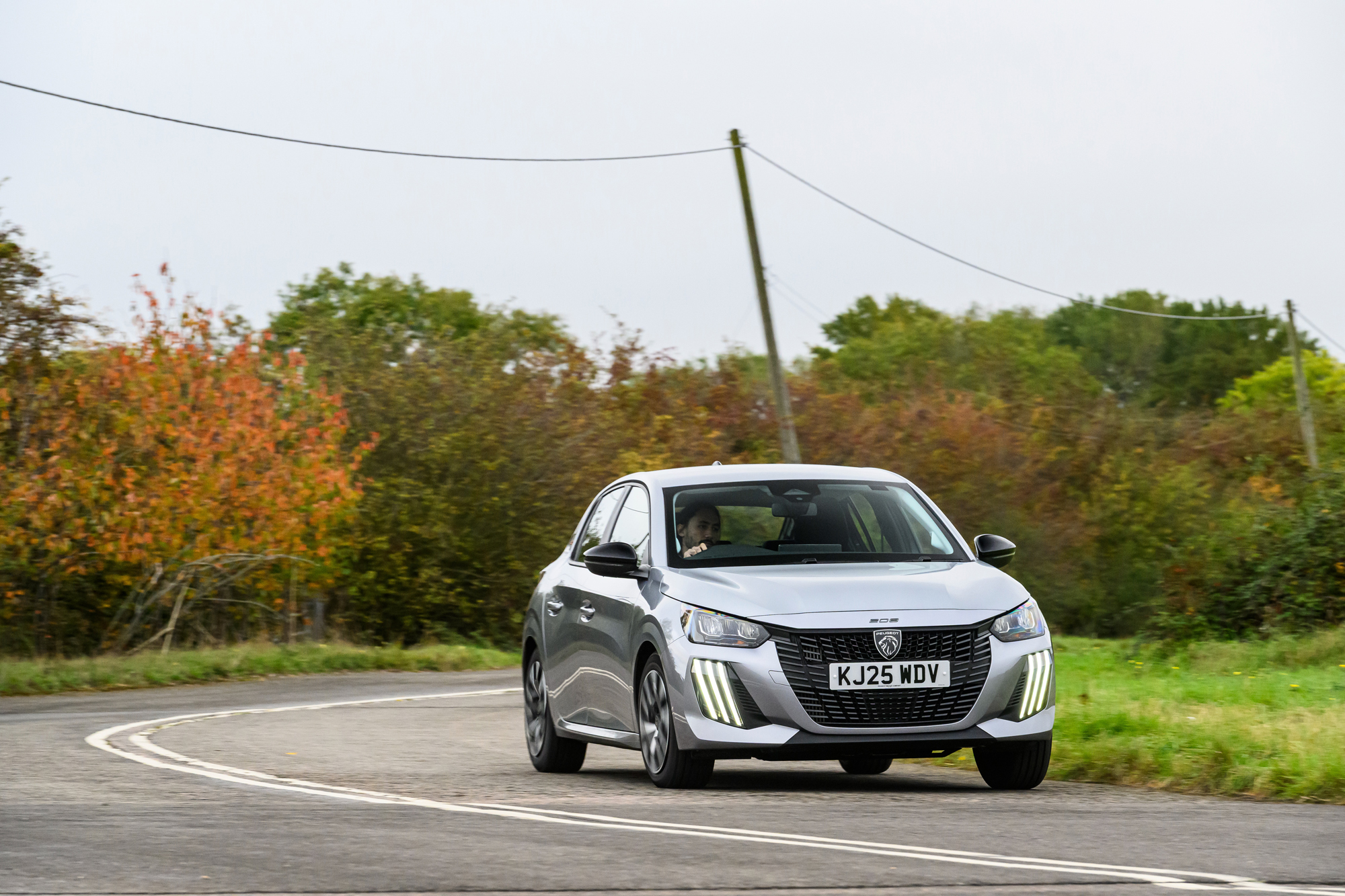
40. Peugeot 208
Peugeot’s new E-208 GTI doesn’t have a manual or even a petrol engine, but the best – and, handily, cheapest – 208 does. The turbocharged, but non-hybrid 1.2 PureTech 100 only makes 99bhp, but it turns out you don’t need more. You can’t have more, anyway: as soon as talk turns to the 109bhp and 143bhp 1.2 hybrids the six-speed manual leaves the chat. Shame about the ugly, awkward shift knob.
What do you gain by going for the manual?
A lighter, simpler 208 that’s closer in spirit to Peugeot’s supermini past masters.
What do you lose by going for the manual?
The EV’s punch and 10bhp versus the base mild-hybrid auto.

39. Kia K4
Meet the Golf’s newest nightmare. Roomier than the VW, much cheaper and backed by a seven-year warranty, this edgy hatch (and saloon) is far more convincing than the Ceed it replaces. You can order a K4 with 147bhp and 177bhp turbo’d 1.6-litre engines, but only the base 113bhp mild-hybrid 1.0 lets you pick a six-speed manual. The K4’s not as dynamically sorted as a Golf, and has fewer manual options, but Wolfsburg has every right to worry.
What do you gain by going for the manual?
A sub-£26k starting price – when the cheapest Golf is almost £29k.
What do you lose by going for the manual?
The DCT’s impressive smoothness, and access to the gutsier engines.

38. Kia Picanto
A rare surviving city car, but for how long? Kia dropped the punchy 1.0 turbo engine at the last facelift, when the Picanto was restyled to look like one of those Japanese square watermelons, and now it’s junked the 1.2, leaving only a 67bhp 1.0. The good news is it’s a micro riot when paired with a five-speed manual (and definitely not the automated manual), the kind of package that reminds you of the joy of ripping up your L-plates years ago.
What do you gain by going for the manual?
Cheapest thrills and a 14.6sec 0-62mph time instead of 17.2.
What do you lose by going for the manual?
The chance to revisit 1999, when automated manuals were all the rage.
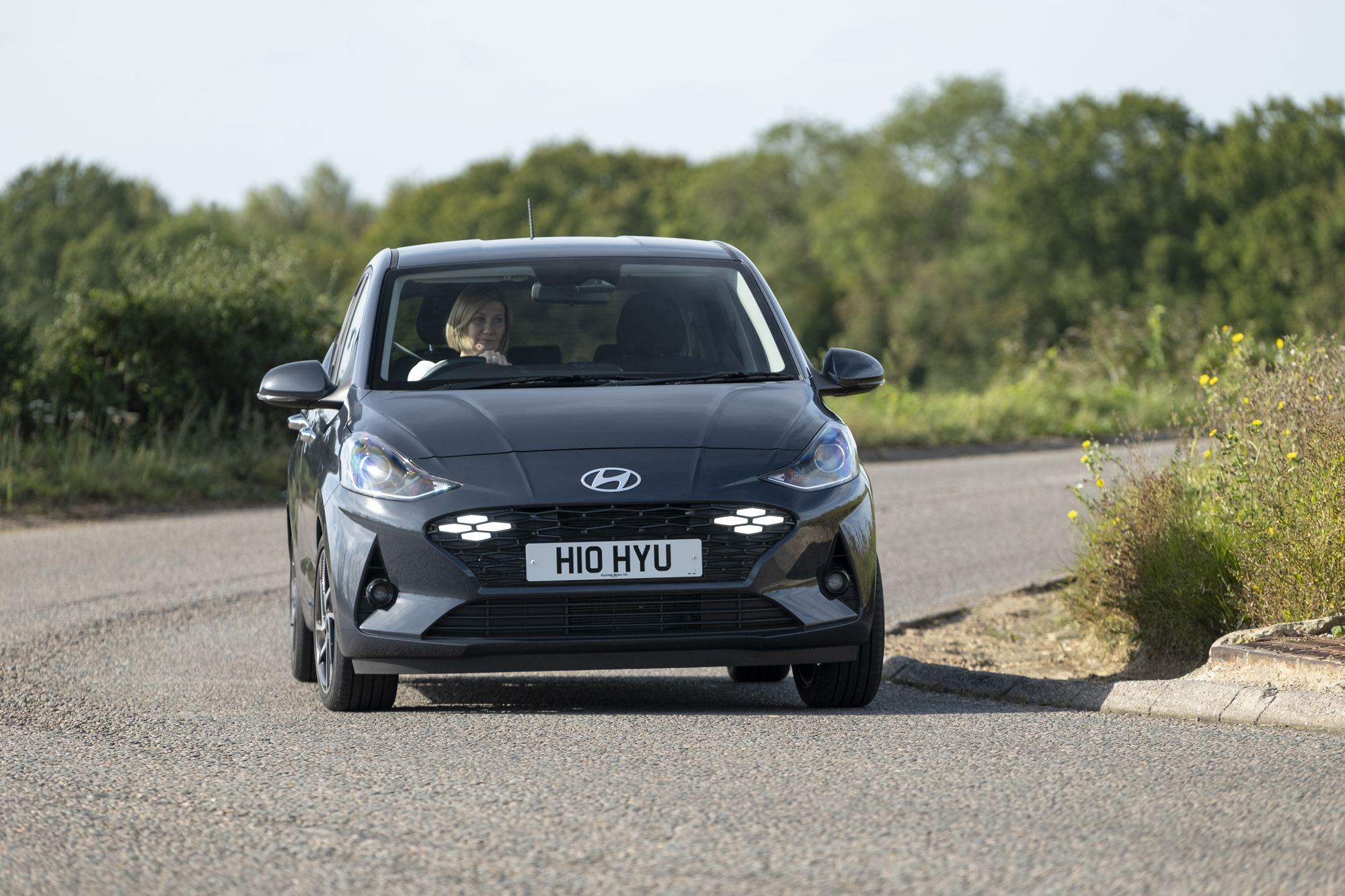
37. Hyundai i10
Small enough to sniff out the stealthiest of parking spaces and so anonymous you might lose it there, the i10 is half-decent fun to drive in a no-frills kind of way. All three engines – 62bhp and 89bhp 1.0 triples, and a 78bhp, 1.2-litre four – get a five-speed manual as standard. Don’t even think about the auto alternative. It’s an old-tech automated manual and so slow and jerky you’ll be convinced you got wheel-clamped and hadn’t noticed.
What do you gain by going for the manual?
The will to live – whereas you’ll lose it with the jerky 1.0 auto and its woeful 18.4sec 0-62mph time.
What do you lose by going for the manual?
Almost 3.0sec from the 1.0 auto’s abysmal 0-62mph time, and 3.2sec off the 1.2’s.
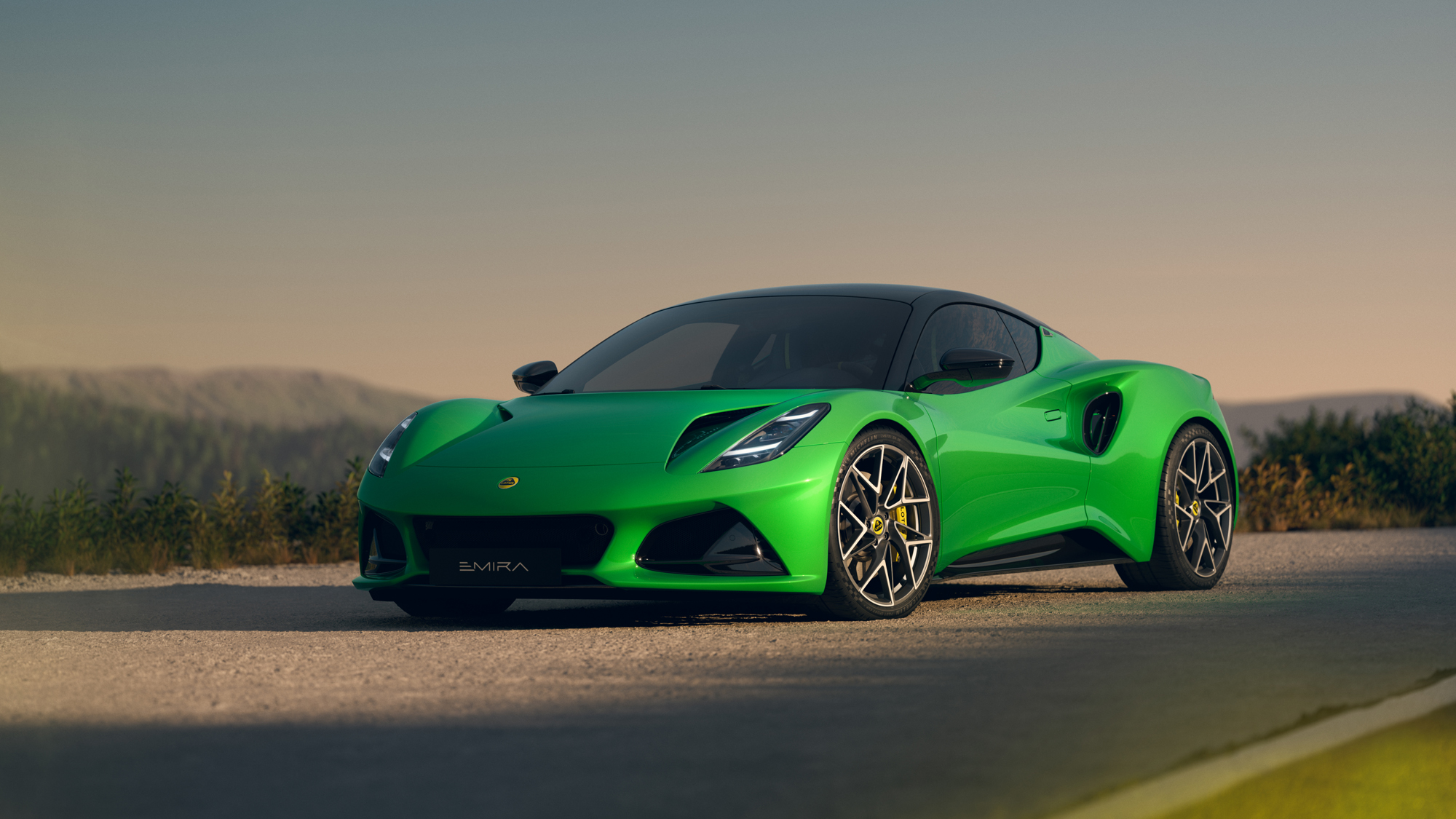
36. Lotus Emira
Pretty sports car with knockout chassis seeks hunky, charismatic powertrain. We’d swipe left and take a pass on the base 2.0-litre, AMG-powered Emira and its frustratingly off-colour dual-clutch transmission. The Toyota V6 alternative (making a similar 400-ish bhp) is no Porsche flat-six, and its six-speed manual is a little clunky, but it makes for a much better Lotus. But maybe hang on – word is, Lotus is working on a stick-shift V8… Could be interesting.
What do you gain by going for the manual?
A V6 soundtrack and the interaction you expect from a Lotus.
What do you lose by going for the manual?
The shift quality isn’t great and the V6 is slower than the AMG four-cylinder motor.
ard to drive round the base motor’s weak low-end urge.
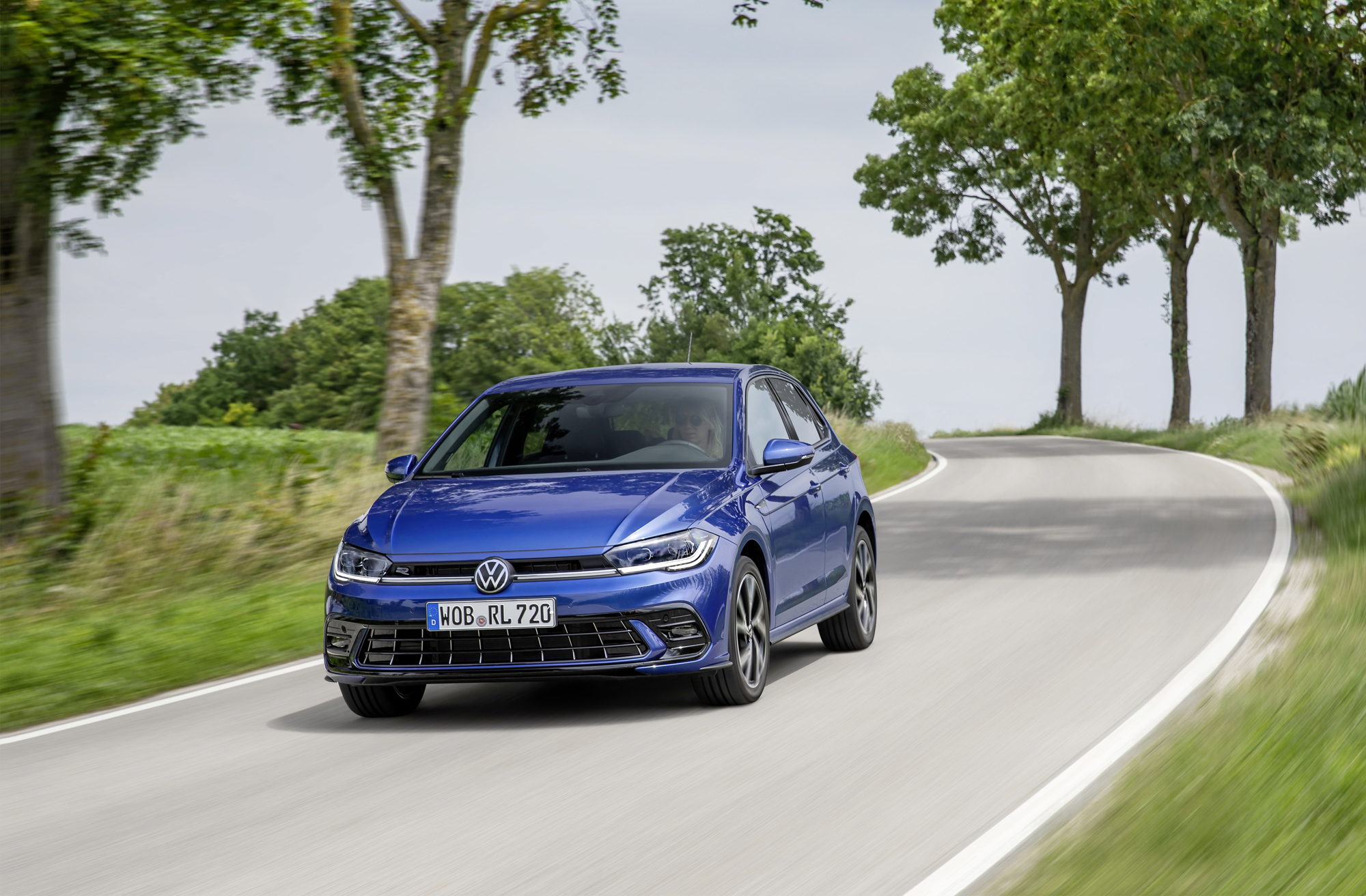
35. Volkswagen Polo
Wolfsburg’s junior Golf just hit the big 5-0, and for a while it looked like VW was going to hand the combustion version a KO. Instead, it will live on alongside the new electric ID. Polo with a facelift, mild-hybrid tech and probably fewer manual options. Even now, there are only two, and only one of them (the 94bhp 1.0) is worth bothering with. The shift is light, precise and satisfying; the comfort-biased handling could learn a thing or two.
What do you gain by going for the manual?
Regret that you didn’t take the bus if that manual’s bolted to the 79bhp 1.2. ‘Sorry I’m late… again.’
What do you lose by going for the manual?
A GTI option. But then again the hot hatch is DSG-only but underwhelming, so don’t fret.
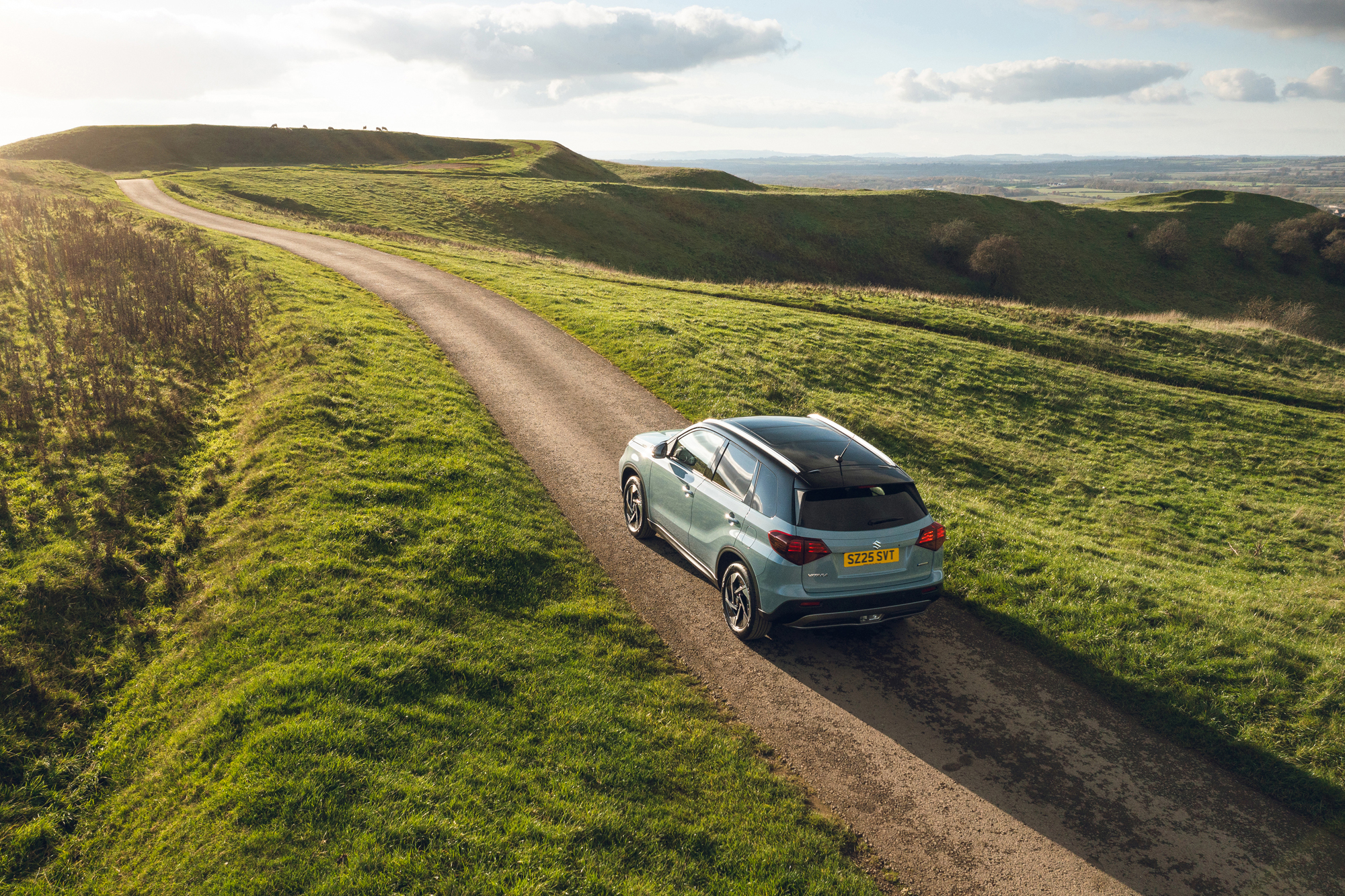
34. Suzuki Vitara
A solid little SUV package on its day, but that was yesterday – the Vitara turned 10 this year, and the interior feels cheap and dated. The peppy 1.4 BoosterJet hybrid engine remains a highlight, though the hybrid bit is really just a starter-generator. Suzuki did offer a full hybrid, but that’s gone. Still, there is the option to choose from two or three pedals in the footwell and two or four driven wheels.
What do you gain by going for the manual?
A bit more zip, and a smaller bill, which is what Suzukis should be about.
What do you lose by going for the manual?
Eating crips on the move becomes a messy, one-handed job with no happy ending.
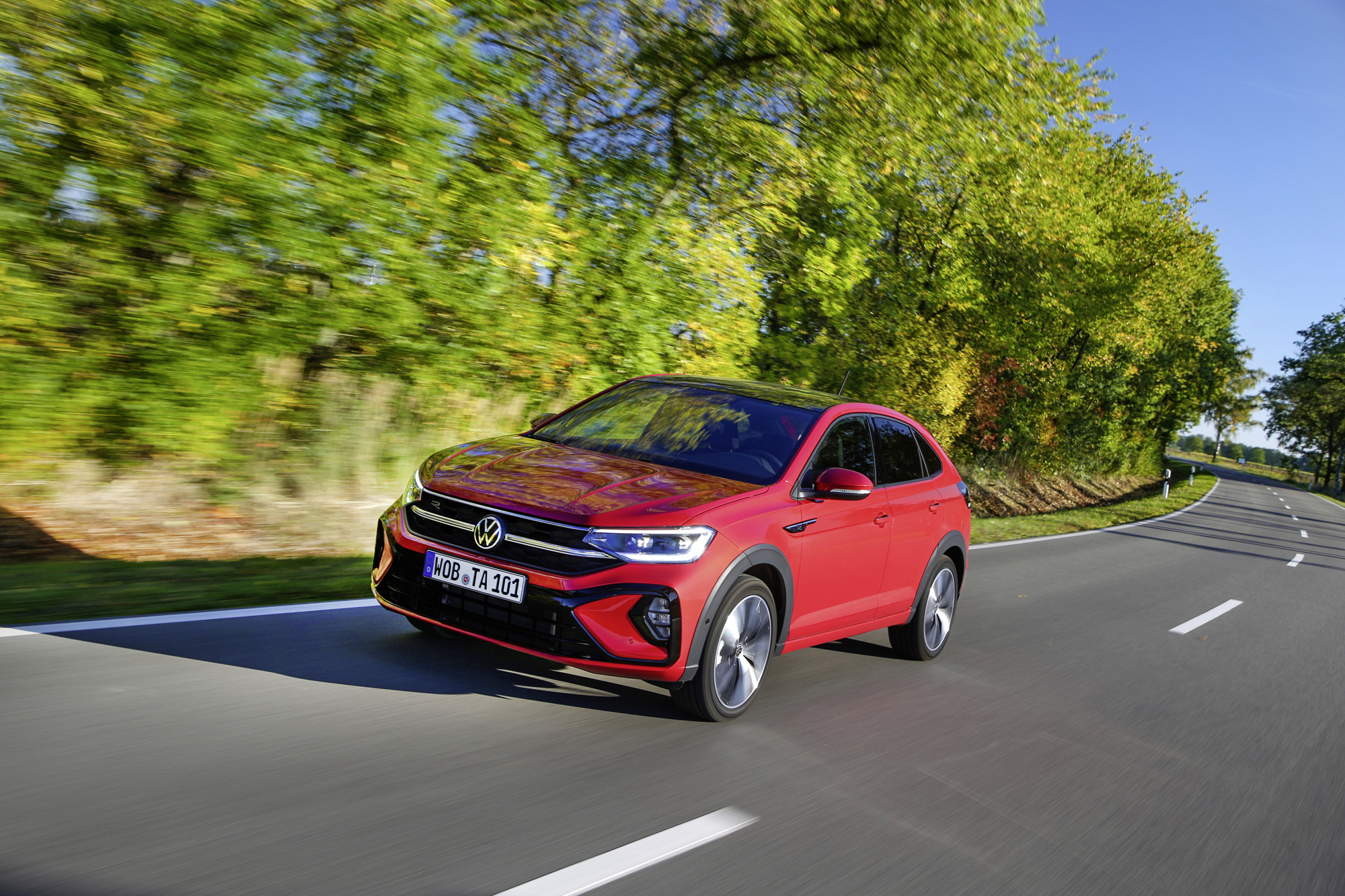
33. Volkswagen Taigo
Like a T-Cross with a Scirocco tattoo, the Taigo tries harder to look sporty than feel it. So it doesn’t fizz like a Puma, but it’s competent in the bends and better than that on the bumps. Unlike its Polo little brother, the Taigo lets you mate the 113bhp 1.0 TSI 115 with a six-speed manual, and we’d go for that set-up over the base 94bhp TSI 95 version and its five-speeder.
What do you gain by going for the manual?
A more responsive feel and over £1800 saved.
What do you lose by going for the manual?
Those zingy, snap-through DSG upshifts.

32. Vauxhall Astra
Seat’s Leon (and its Cupra alter ego) is still the driver’s choice in this class, but the Astra really upped its dynamic game during its last costume change. Soon after, Vauxhall added a punchy 143bhp, 1.2 mild hybrid, but it’s auto-only, so restless wrists will have to settle for base 128bhp version. You lose the hybrid boost and some low-down torque, but gain the Astra’s only manual option to have fun with what little urge it has. Loses points for its large, ergonomically crude knob.
What do you gain by going for the manual?
The lightest, best-resolved Astra available.
What do you lose by going for the manual?
A chunk of between-the-seats storage and a tidier console.

31. Volkswagen T-Cross
Mechanically twinned with the Taigo, the T-Cross is no GTI, but it’s tidy, refined, and far less dull than it looks. It nails the sensible stuff, like offering a useful sliding rear bench, and if you want to slide into those gears yourself, VW also has you covered. A manual is compulsory on the 94bhp 1.0 and optional on the 113bhp version – the big fella is our pick, though it might be a different story if the 148bhp 1.5 wasn’t auto-only.
What do you gain by going for the manual?
More engagement in a sea of small-SUV sameness.
What do you lose by going for the manual?
The DSG’s plonk-it-in-D ease.
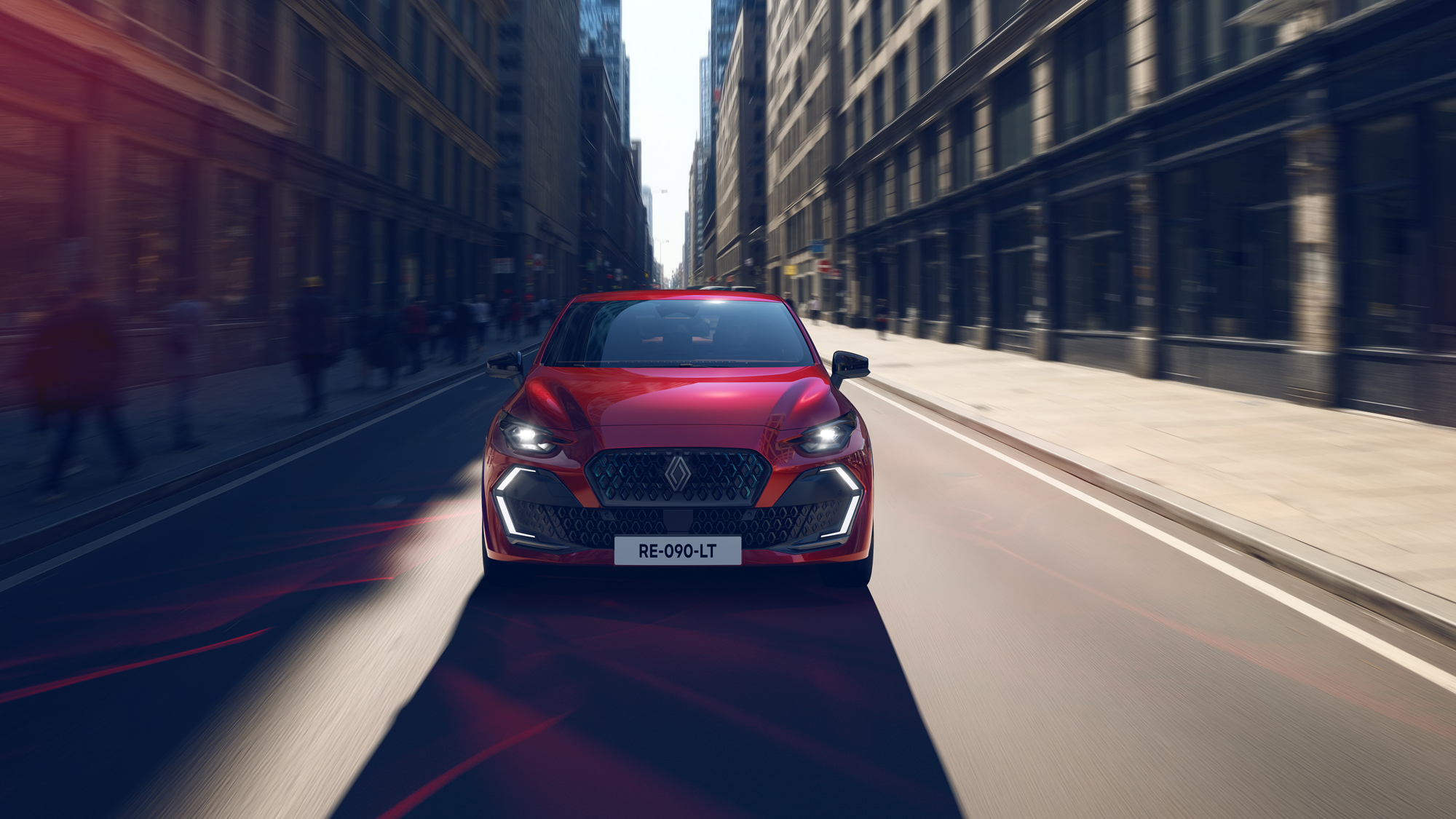
30. Renault Clio
The Clio gives a lifeline to drivers who are young of years but old of school: a thrifty, thrummy 1.0 TCe90 petrol engine that’s a sound match for the tidy handling. Okay, so 89bhp is never going to deliver Renault Sport-grade thrills, but it’s gutsy enough around town and unlike some rivals has a sixth gear to keep motorway din to a minimum. It’s a bigger hoot than the faster but dull-witted 143bhp hybrid, and the most agile supermini this side of a Seat Ibiza.
What do you gain by going for the manual?
Lower price and a more connected feel to the nimble chassis.
What do you lose by going for the manual?
The hybrid’s motorway pull and aversion to filling stations.

29. Skoda Scala
A Golf-sized hatch for Polo money, Scala trots out all the old VW Group under-bonnet faves, starting with the (slightly underpowered here) 94bhp 1.0 TSI triple and five-speed manual combo. The ’box shifts sweetly but if you want to get a hurry on you’re better off with the 113bhp version and its six-ratio manual. Or better still, the 148bhp 1.5, which comes with a choice of manual or DSG.
What do you gain by going for the manual?
Maximum value, minimum complication. Classic Skoda.
What do you lose by going for the manual?
No Scala invites a thrashing so you might wonder if it’s worth the bother.
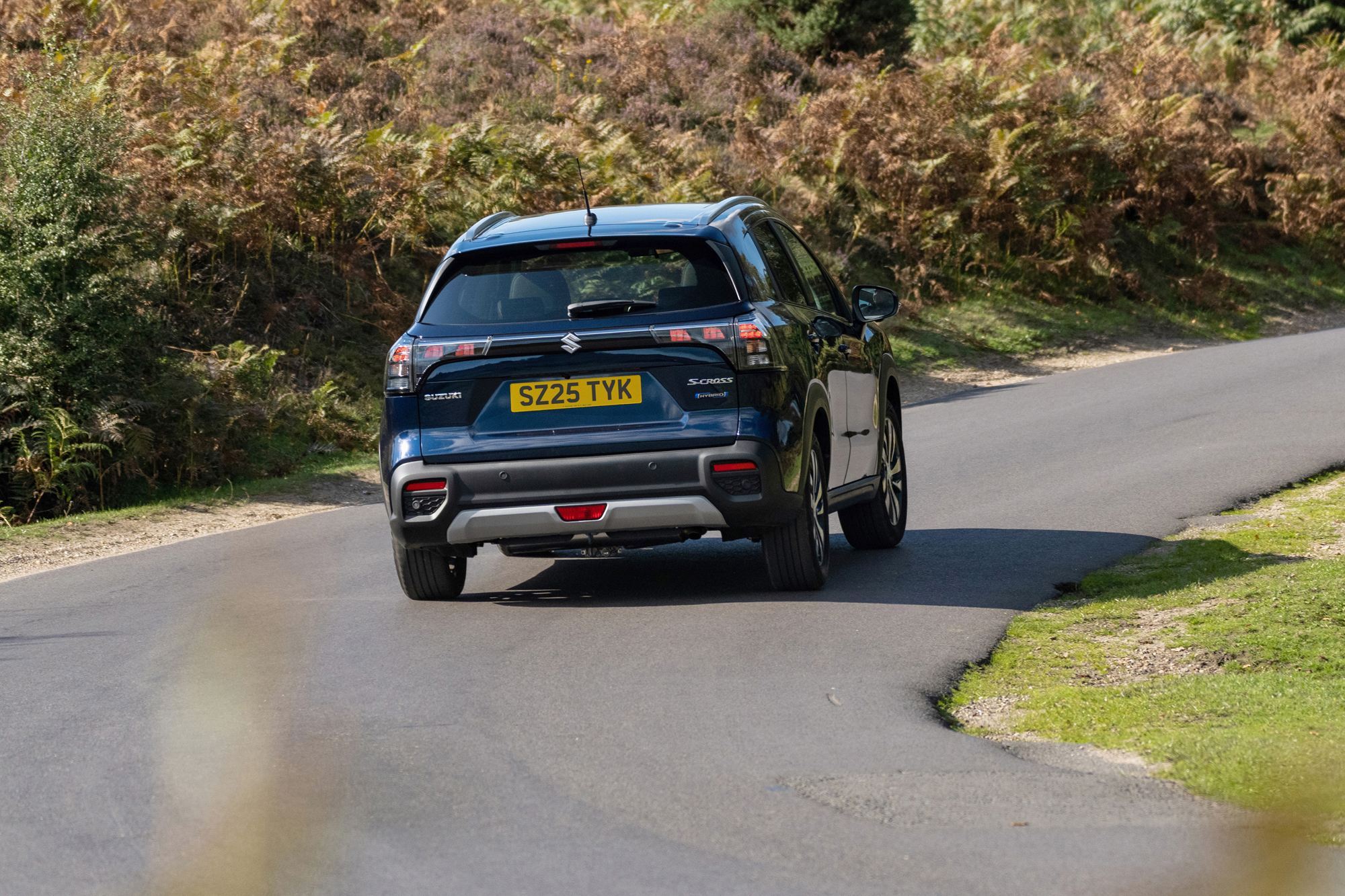
28. Suzuki S-Cross
Long on value but so short on cool even a micrometer couldn’t measure it, the S-Cross’s dynamic secret is a gearchange some sports cars would kill for. But don’t get too excited, as the handling’s 100 per cent beige. Suzuki killed the full hybrid in the UK, leaving only the 1.4 BoosterJet mild hybrid with a choice of six-speed manual or six-speed auto, and either front- or all-wheel drive.
What do you gain by going for the manual?
Over 3.5mpg, 4mph at the top end and a corker of a gearchange.
What do you lose by going for the manual?
Every traffic-light GP. The manual’s over a second slower to 62mph. The auto’s smoother and no slower despite the smaller pony count.
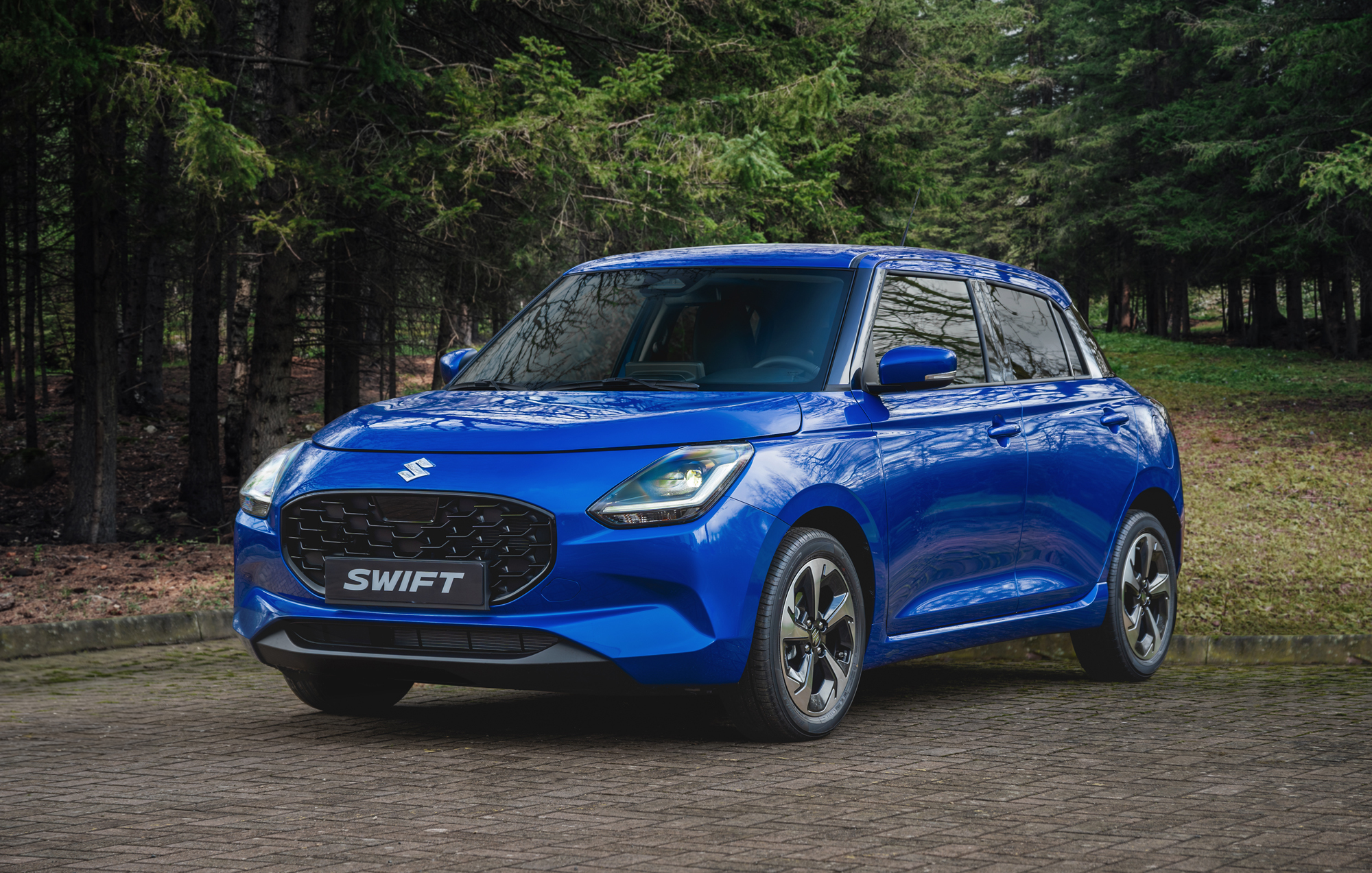
27. Suzuki Swift
Think Audi is good at filling niches within niches? Suzuki sells a supermini with all-wheel drive and a five-speed manual transmission. Or at least tries to sell. Like every other Swift, it comes with a mild-hybrid turbo-free 1.2 pushing out 81bhp, but the front-wheel-drive Swifts let you choose between the default manual ’box or a CVT auto that boosts performance but kills economy. The manual’s not the sweetest – a little soft and mealy-mouthed – but it’s our pick. A car from 20 years ago, in a good way.
What do you gain by going for the manual?
You save £1250 at the dealer and a heap more at the pumps.
What do you lose by going for the manual?
No Swift is swift, but the CVT is 0.6sec fleeter to 62mph.
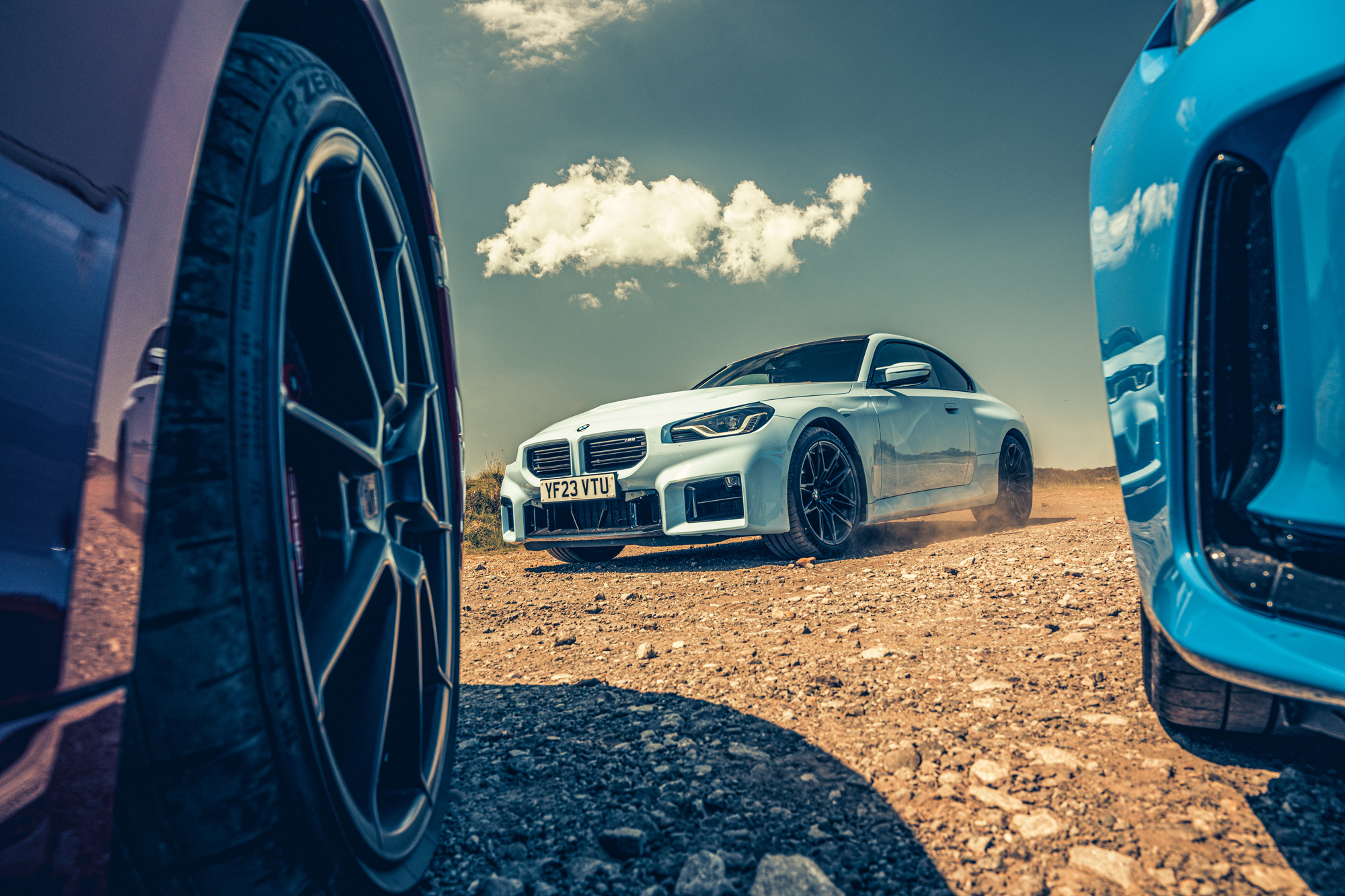
26. BMW M2
BMW’s smallest M car is now its most analogue. The M2’s 473bhp twin-turbo straight-six sends power to the rear wheels through either an eight-speed auto or a six-speed manual – your choice determines how unhinged you want the experience to be. It’s the last manual M car on sale in the UK, and probably one of the last ever.
What do you gain by going for the manual?
An authentic, old-school M-car experience, the kind enthusiasts will pine for 10 years from now.
What do you lose by going for the manual?
Torque. The manual’s capped at 406lb ft versus 443lb ft for the M2 automatic. And the engine really does suit the auto nicely… gah!
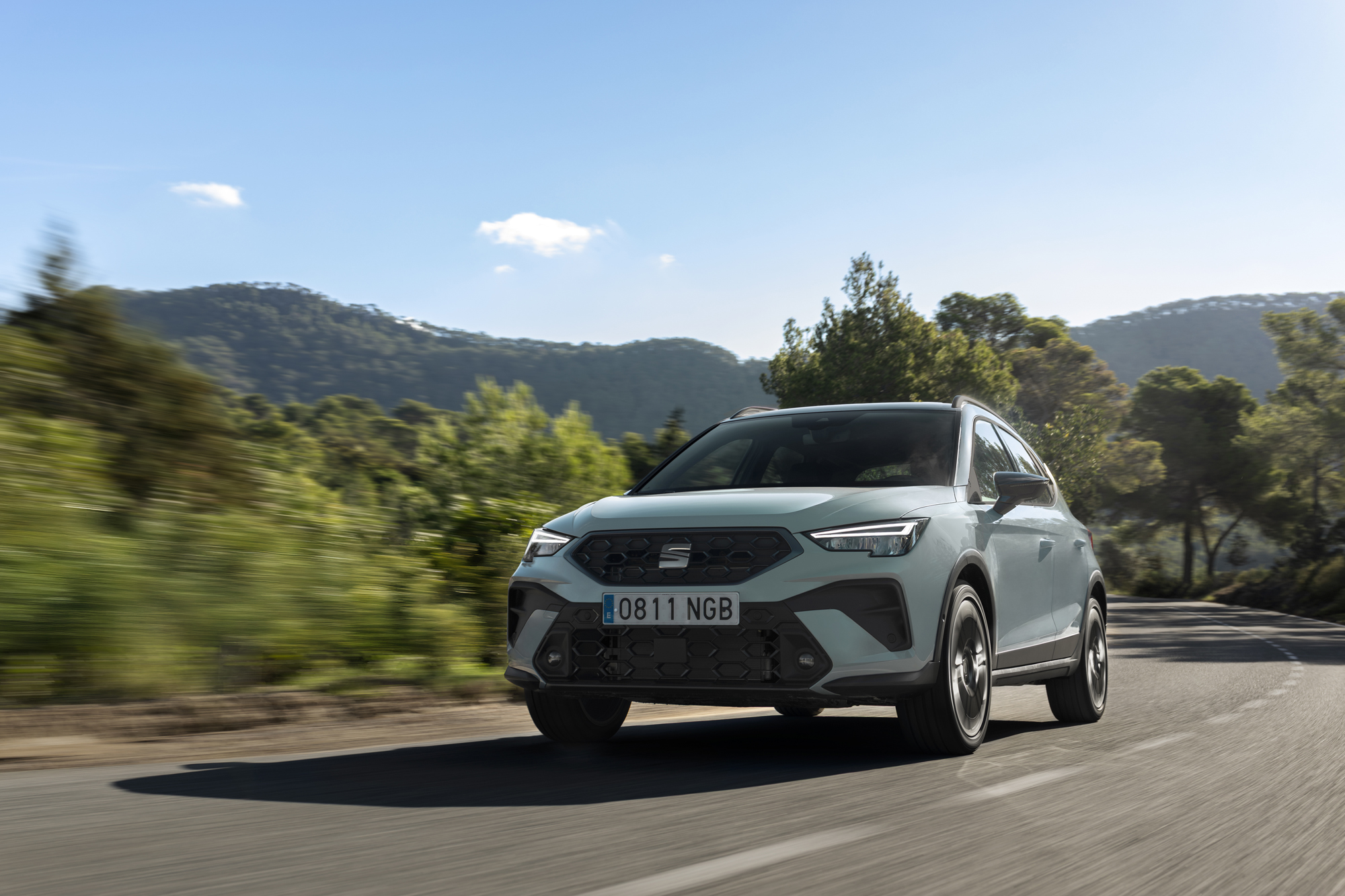
25. Seat Arona
The Ibiza’s taller cousin serves up the same punchy 1.0 TSI motors, though this time you have to shell out for at least a mid-ranking FR trim to unlock a manual option for the 113bhp engine. The Arona’s extra 44kg of ballast versus the supermini means it’s worth the splurge. Seat also gives Arona buyers the chance to slot a 148bhp 1.5 under the bonnet, but that one’s strictly a dual-clutch affair.
What do you gain by going for the manual?
Makes a surprisingly not-dull crossover even better, faster and more frugal.
What do you lose by going for the manual?
Some of the smoothness of the DSG, especially when crawling in city jams.
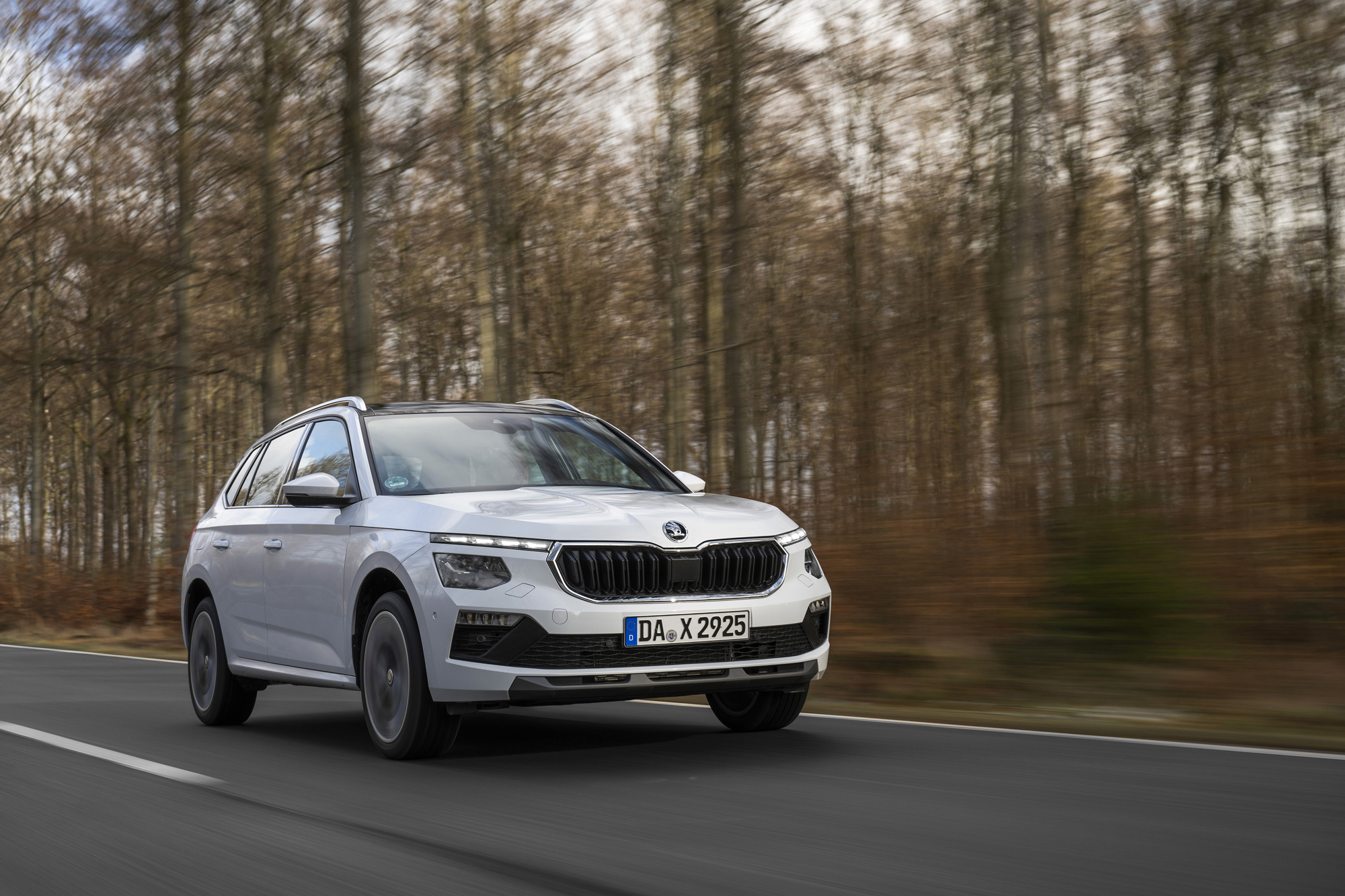
24. Skoda Kamiq
A compact Skoda crossover with the same VW Group powertrain options as the Seat Arona. Who knew? The surprise is in the small print. Yes, the line-up kicks off with an identical five-speed 94bhp 1.0-litre, then steps up to a 113bhp version of the same in six-speed manual or seven-speed DSG form. But only Skoda lets you pick a manual transmission with the 148bhp 1.5. The Seat’s miles more fun, but still…
What do you gain by going for the manual?
A livelier drive from a car that could do with some help in that department.
What do you lose by going for the manual?
The DSG’s ‘I got this’ capability and easier town manners.
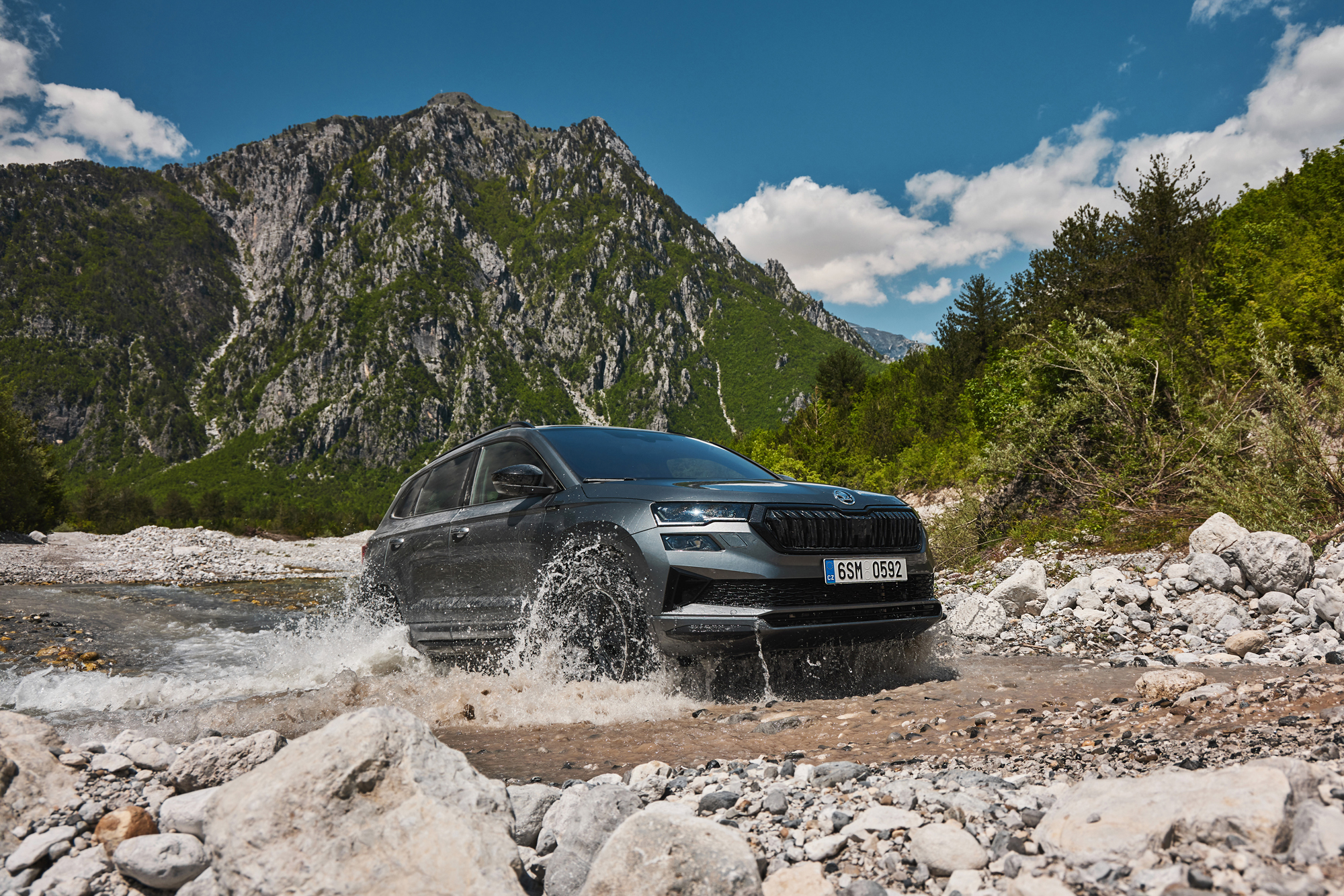
23. Skoda Karoq
Skoda’s answer to Kia’s destroys-all Sportage shows its age in the lack of a hybrid option, but that’s not so much a problem if you want to row your own gears. The base 113bhp 1.0 is manual-only, just like a 911 Carrera T, but that’s definitely where the comparisons end. If you’re considering putting anything more than a paperclip in the boot you’re going to want the gutsier 148bhp 1.5.
What do you gain by going for the manual?
Old-fashioned control and a £1400-plus saving versus a DCT.
What do you lose by going for the manual?
The 187bhp 2.0 and all-wheel-drive diesel are off-limits to manual fans.
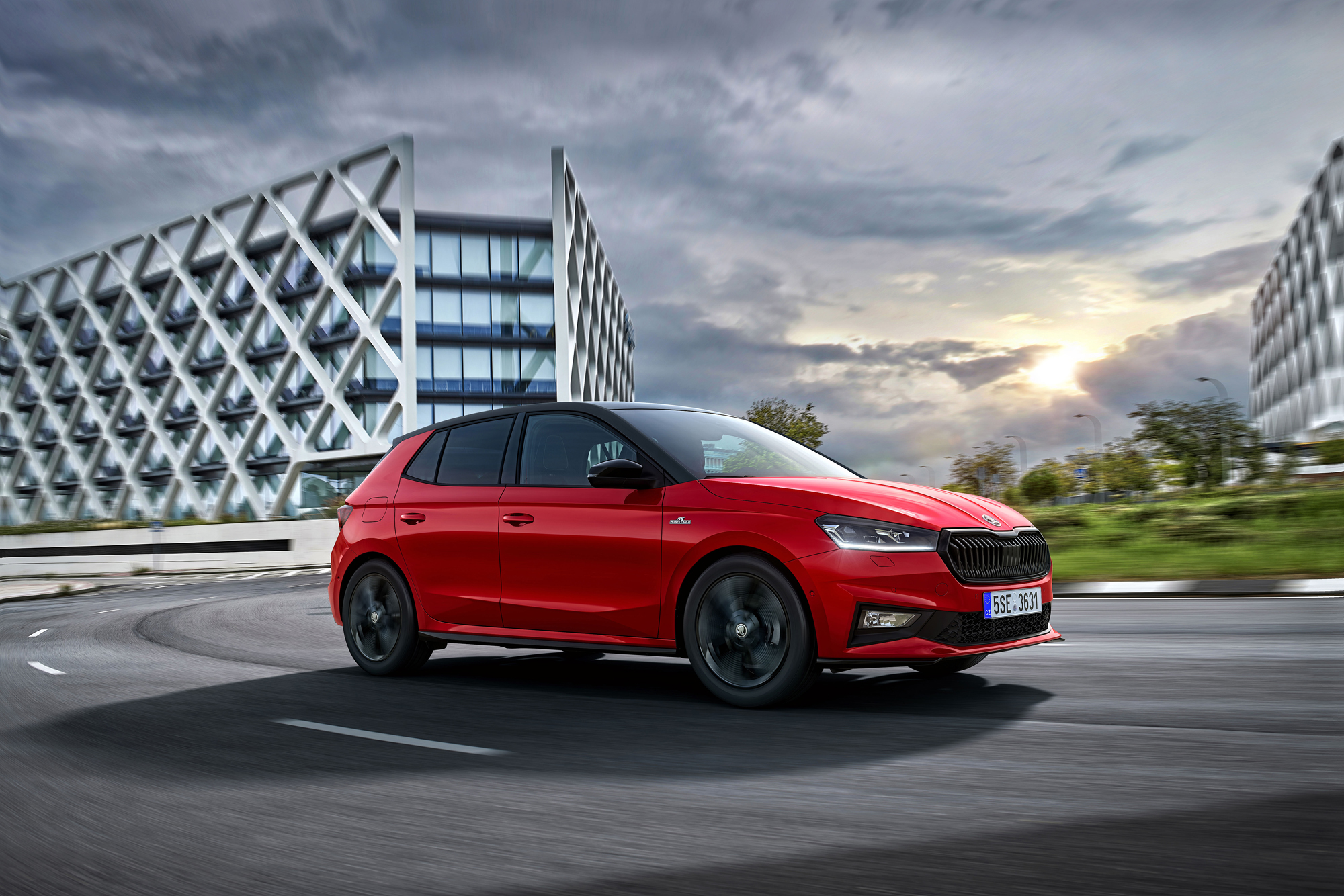
22. Skoda Fabia
It might feel like it’s all about them fancy EVs at Skoda these days, but VW’s Czech cousin hasn’t forgotten its no-frills roots. Or its no-performance ones: the base five-speed Fabia is saddled with a 79bhp non-turbo MPI 1.0-litre that delivers pre-Glasnost levels of go. Salvation comes via VW’s 94bhp (also five-speed and a no-brainer £550 upgrade) and six-cog 113bhp 1.0-litre engines.
What do you gain by going for the manual?
Classic Skoda simplicity, more mpg, a smidge more oomph.
What do you lose by going for the manual?
You miss out on the DSG-only 1.5’s 148bhp; it’s a bit of a sleeper.

21. Hyundai i20
Decisions, decisions. You’ll not be making many on the i20 configurator now that Hyundai has junked both the 201bhp, 1.6-litre i20 N hot hatch and its MHEV, warm-ish lookalike, the 118bhp 1.0-litre N Line. You can still get the N Line baubles, but all i20s now come with the same 98bhp non-electrified 1.0-litre triple. A Seat Ibiza is slightly better in the bends, but there are plenty of smiles to be had stirring the i20’s snappy six-speeder to make that three-pot growl.
What do you gain by going for the manual?
A package that’s more fun than a Skoda Fabia and 1.0sec quicker to 62mph than the DCT i20.
What do you lose by going for the manual?
Some buyers want the supermini-as-white-goods experience and the DCT better delivers it.
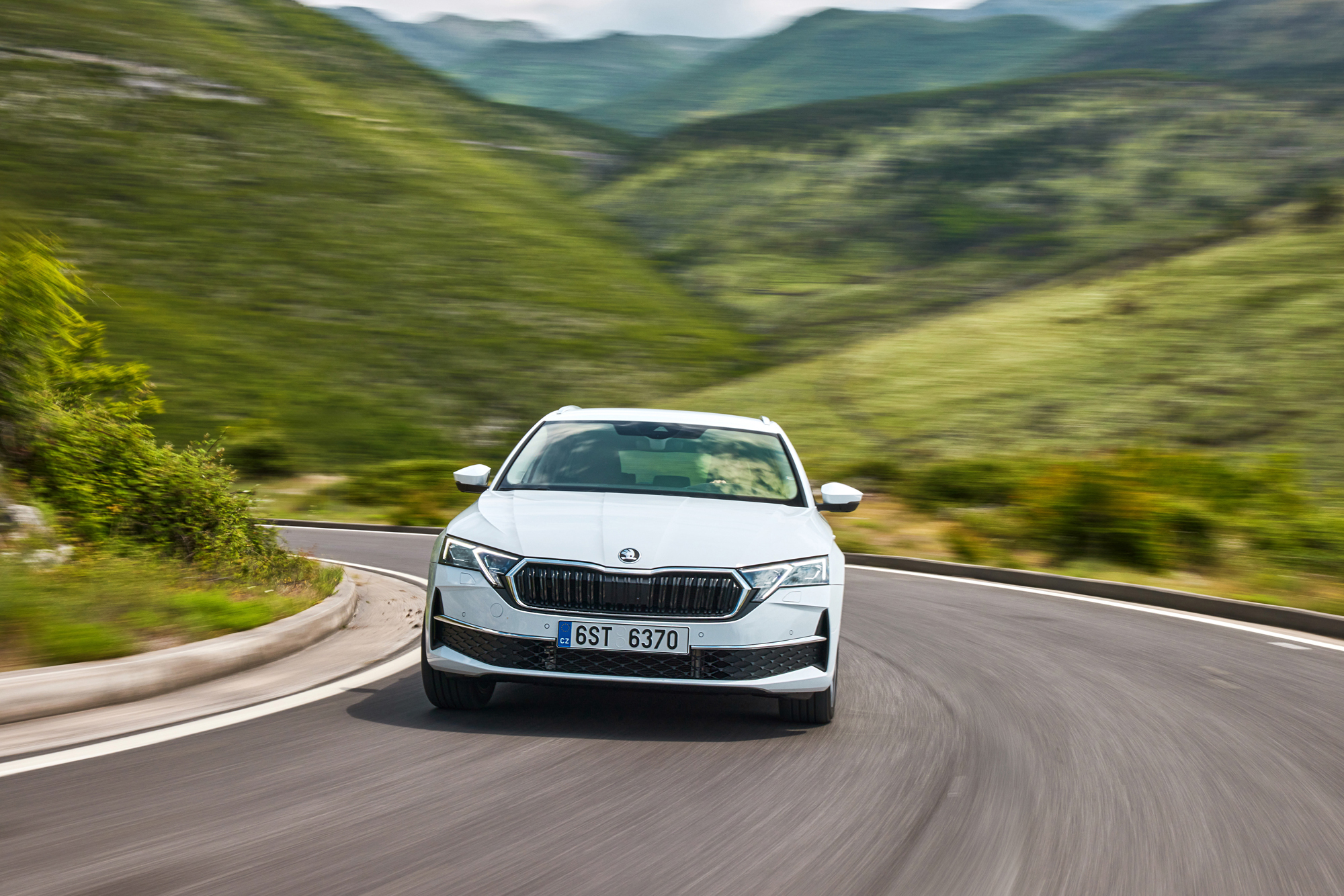
20. Skoda Octavia
Supposedly the driver’s Octavia, the 261bhp vRS went DSG-only last year. But you can scratch your manual itch further down the range provided you temper your performance expectations. Skip the ridiculously under-stressed 113bhp turbo’d 1.5, which makes fewer ponies than Mazda’s naturally-aspirated 1.5, and go for the 148bhp version. Both – plus a torquey but noisy 113bhp diesel – are compatible with VW’s light, clean-shifting manuals.
What do you gain by going for the manual?
A shift so easy, it’s barely any more work than driving the DSG.
What do you lose by going for the manual?
Skipping the responsive DSG means missing out on the mild-hybrid boost.
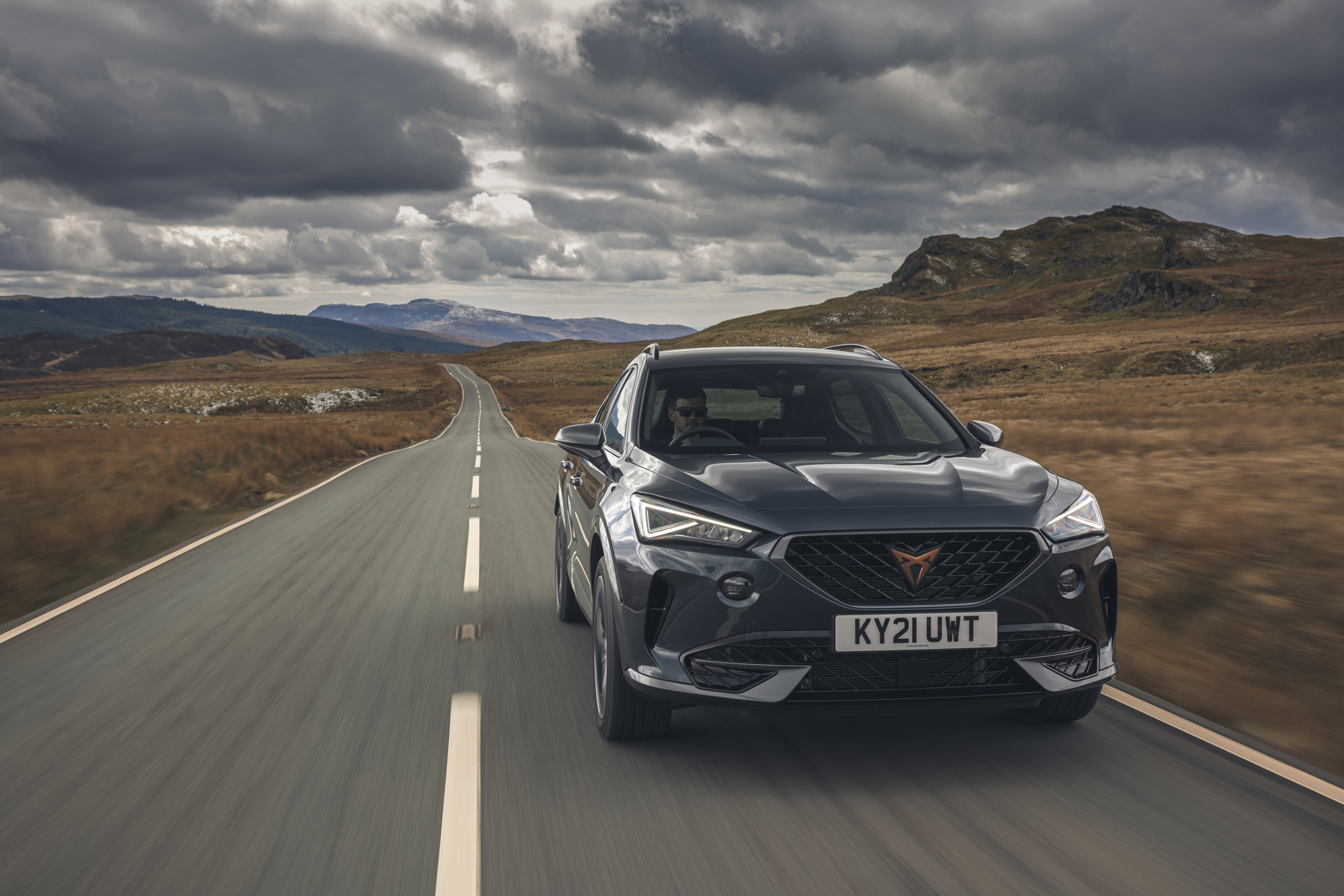
19. Cupra Formentor
Best-looking car that everyday-Joe money can buy? You’ll get no argument from us. The Formentor’s the thinking driver’s crossover: stylish, punchy and sharper to drive than most high-rise hatchbacks. Manual fans are limited to the front-wheel-drive, 148bhp 1.5 TSI 150, which has just enough pep to keep you interested; everything else up to and including the 328bhp AWD VZ3 comes minus a clutch pedal. Shame.
What do you gain by going for the manual?
A lighter, purer-feeling Formentor that’s fun at sensible speeds.
What do you lose by going for the manual?
Half the available powertrains and most of the walk to back up the talk.
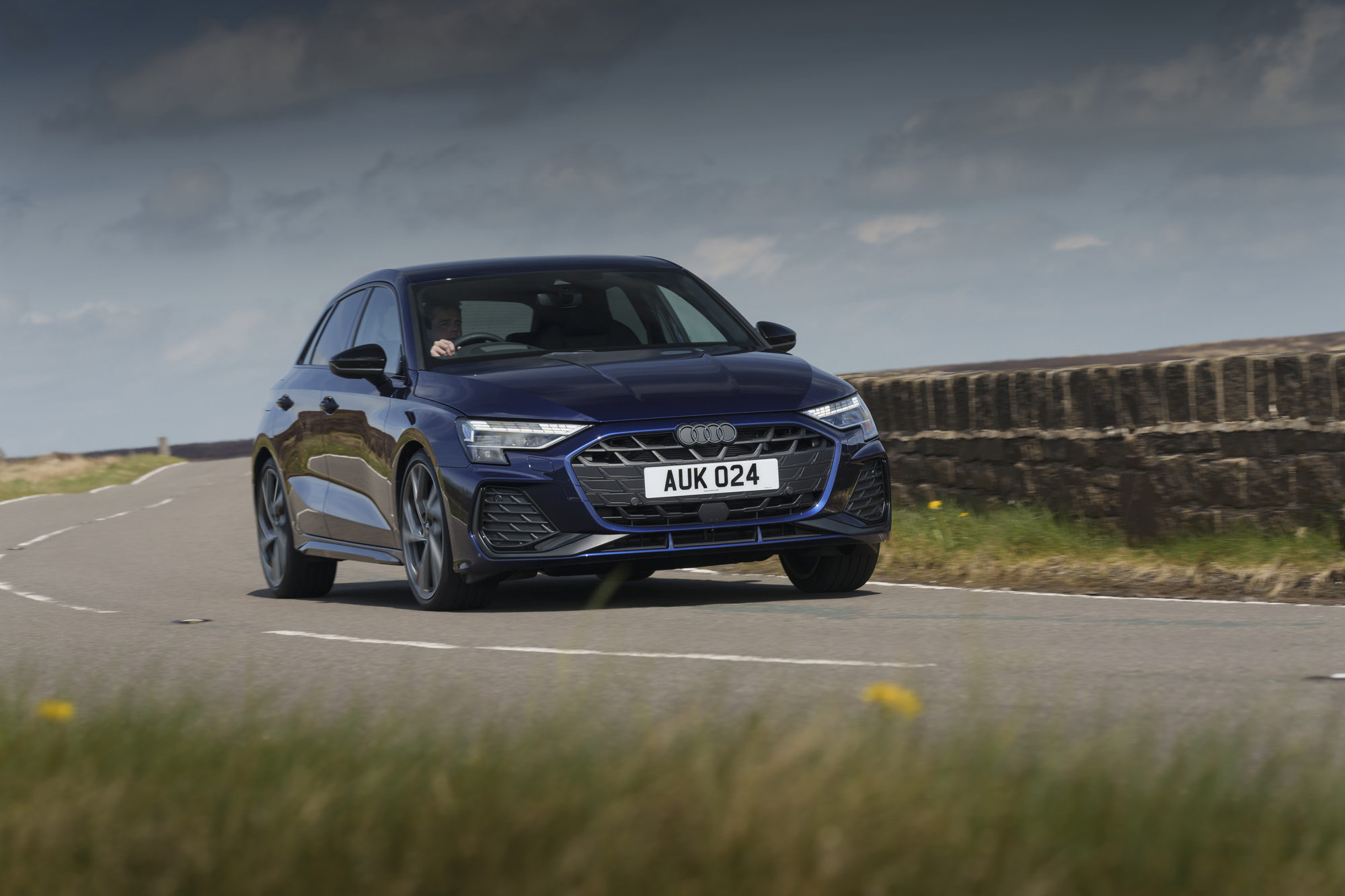
18. Audi A3
You can still have a clutch pedal in Audi’s ever-stylish A3, provided you skip diesel or plug-in hybrid power. The peppy but still frugal 148bhp 1.5 is our pick and its easier pace better suits the A3’s premium promise. A budget-friendly 1.0 TSI was added recently, but with only 114bhp you’d better really like changing gears.
What do you gain by going for the manual?
A little extra pace with the baby 1.0 TSI – 0–62mph in 9.7sec versus 9.9.
What do you lose by going for the manual?
Choose the 1.5 and it’s the auto that’s quicker off the line.

17. Seat Leon
Sister brand Cupra is supposed to be the sporty one, but Seat still has wrist-flick addicts covered. Its plain-clothes versions of the same Leon hatch and Tourer Cupra sells are available here in both 113bhp 1.0 and 148bhp 1.5-litre guises with a six-speed manual. For a real blast of rolling coal from the past you can even get a manual diesel. Remember them? You’ll have to explain the concept to anyone under 25. The three-pedal versions of each miss out on Seat’s mild-hybrid kit, but it’s no deal-breaker.
What do you gain by going for the manual?
Two to three grand in your back pocket…
What do you lose by going for the manual?
… but that’ll be eaten into by the manuals’ inferior mpg and CO2 numbers.
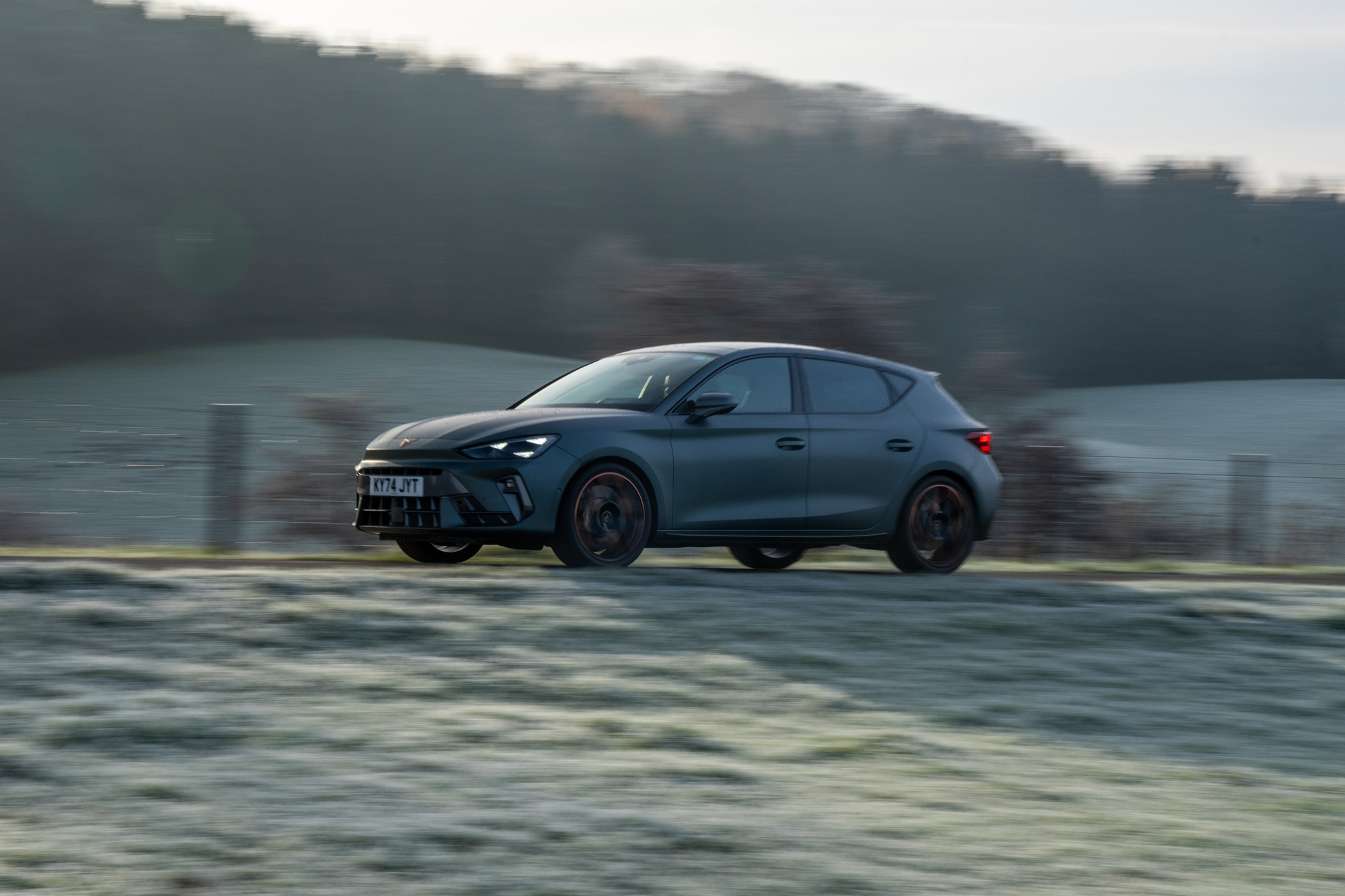
16. Cupra Leon
Still one of the few family cars that feels vaguely spicy, even in humble form. The 148bhp 1.5 TSI 150 gets a six-speed manual, while the mild-hybrid version of the same, the plug-in hybrids and 297bhp hero VZ are DSG-only. You still get a hint of VZ attitude with the base manual – though 9.0sec to 62mph means it really is just a hint – and the Leon is available in both regular hatch and dog-hauling estate forms.
What do you gain by going for the manual?
Hot-hatch swagger for standard-hatch dough and a slick, light shift.
What do you lose by going for the manual?
The DSG’s effortless pace and VZ auto’s launch-control party tricks.

15. Volkswagen Golf
Sad but true: VW’s hero Golfs – the GTI and R – can no longer muster a single manual transmission between them. Blame brutal planned emissions regs that freaked VW out, but then never happened. Cooking Golfs, though, are still up for some Lionel Messi action in the footwell. The 113bhp and 148bhp 1.5s are both available with a choice of manual and dual-clutch transmissions, though only the DSGs get mild-hybrid help.
What do you gain by going for the manual?
A manual-shift R-Line has a tiny sprinkle of old, manual GTI magic.
What do you lose by going for the manual?
The DSG’s quicker shifts and better pairing with mild-hybrid tech.
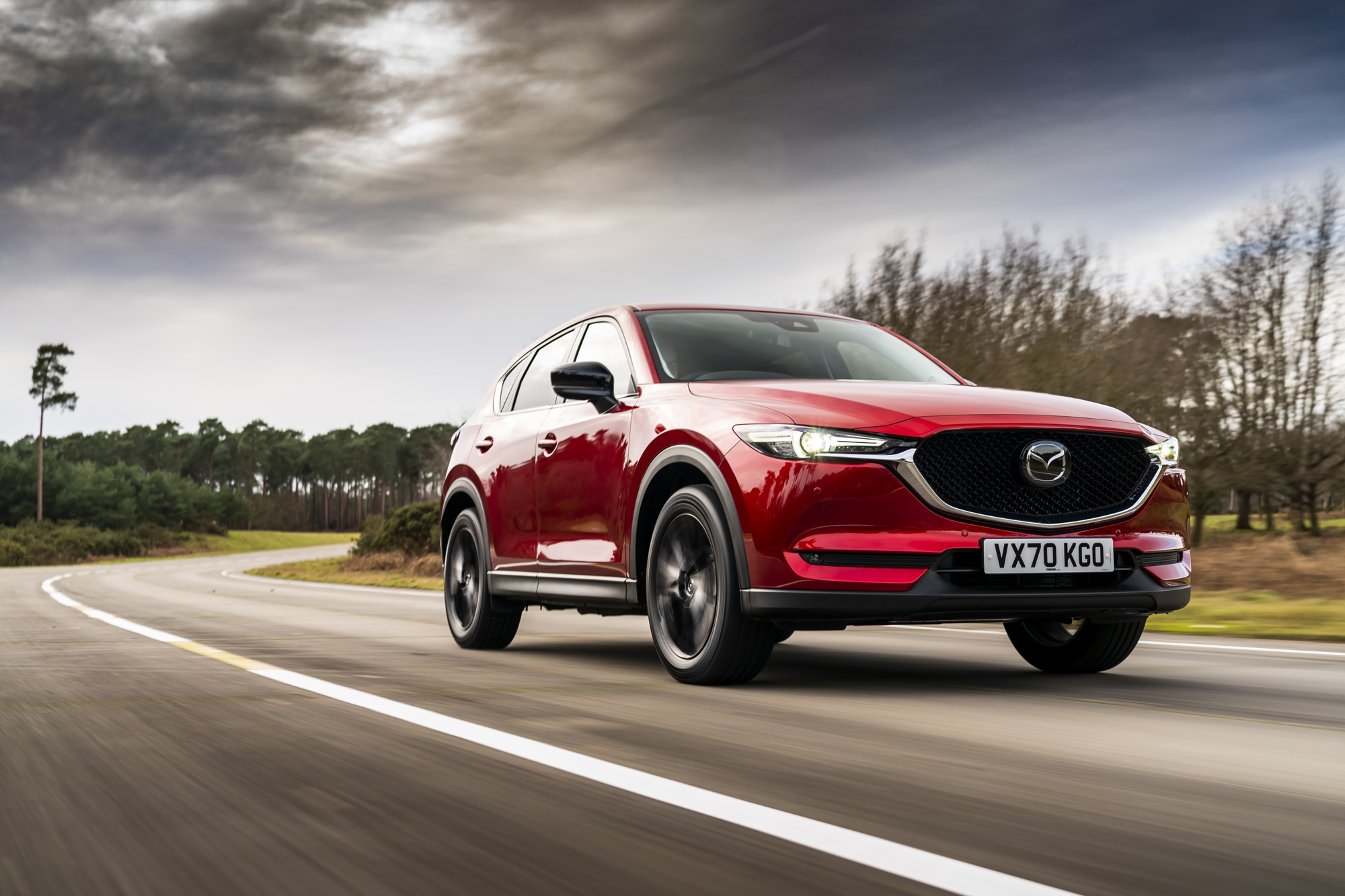
14. Mazda CX-5
Feeling nostalgic for the pre-turbo days when family cars could hardly get out of their own way without a triple downchange? The totally gutless entry-level 2.0 Skyactiv-G petrol CX-5 has got you covered. At least in manual guise you can always be in the right gear to enjoy the sharp chassis. The much torquier 2.2 diesel is also available with a choice of manual or auto, but the 2.5 petrol is auto-only. An all-new CX-5 arrives in the UK in summer ’26.
What do you gain by going for the manual?
That Mazda snick-snick gearshift feel; a crisp, mechanical joy in a crossover wrapper.
What do you lose by going for the manual?
The chance of any respite for your left arm in the base 2.0 petrol.
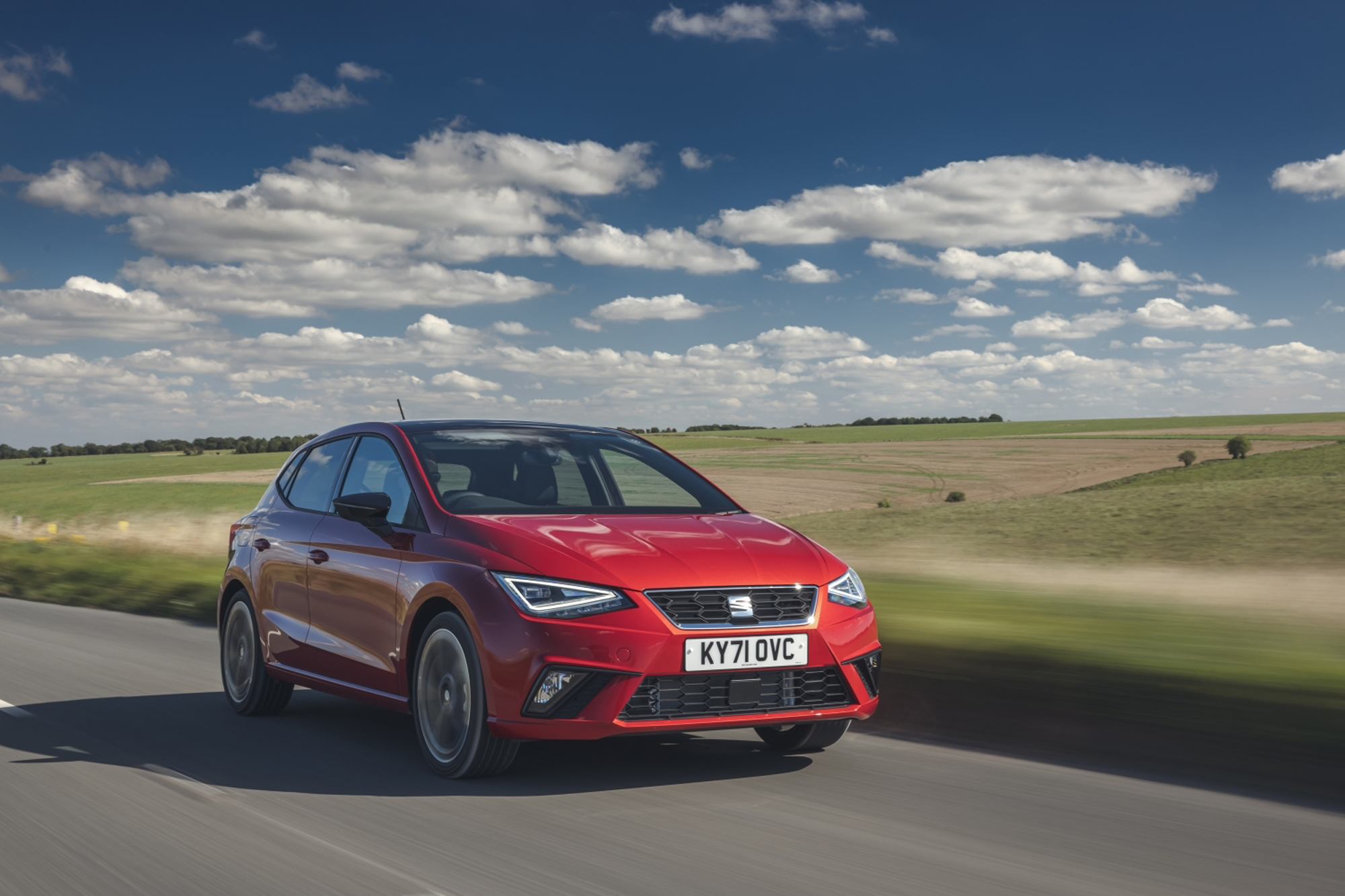
13. Seat Ibiza
Still mourning Ford’s Fiesta? Then you obviously haven’t tried an Ibiza. This Spanish take on VW’s dour but dependable Polo is the best-handling supermini around, and fun even in bottom-rung 1.0 TSI form. That nets you 94bhp and five gears, which sounds underwhelming but really isn’t. Splash for the 113bhp version and you bag an extra ratio plus a little more punch. Both have a great shift quality and Mini-rivalling poise.
What do you gain by going for the manual?
A baby hot-hatch vibe without the insurance and speeding-fine headaches.
What do you lose by going for the manual?
Absolutely nothing. Make ours an 113bhp FR with that trim’s tighter chassis.
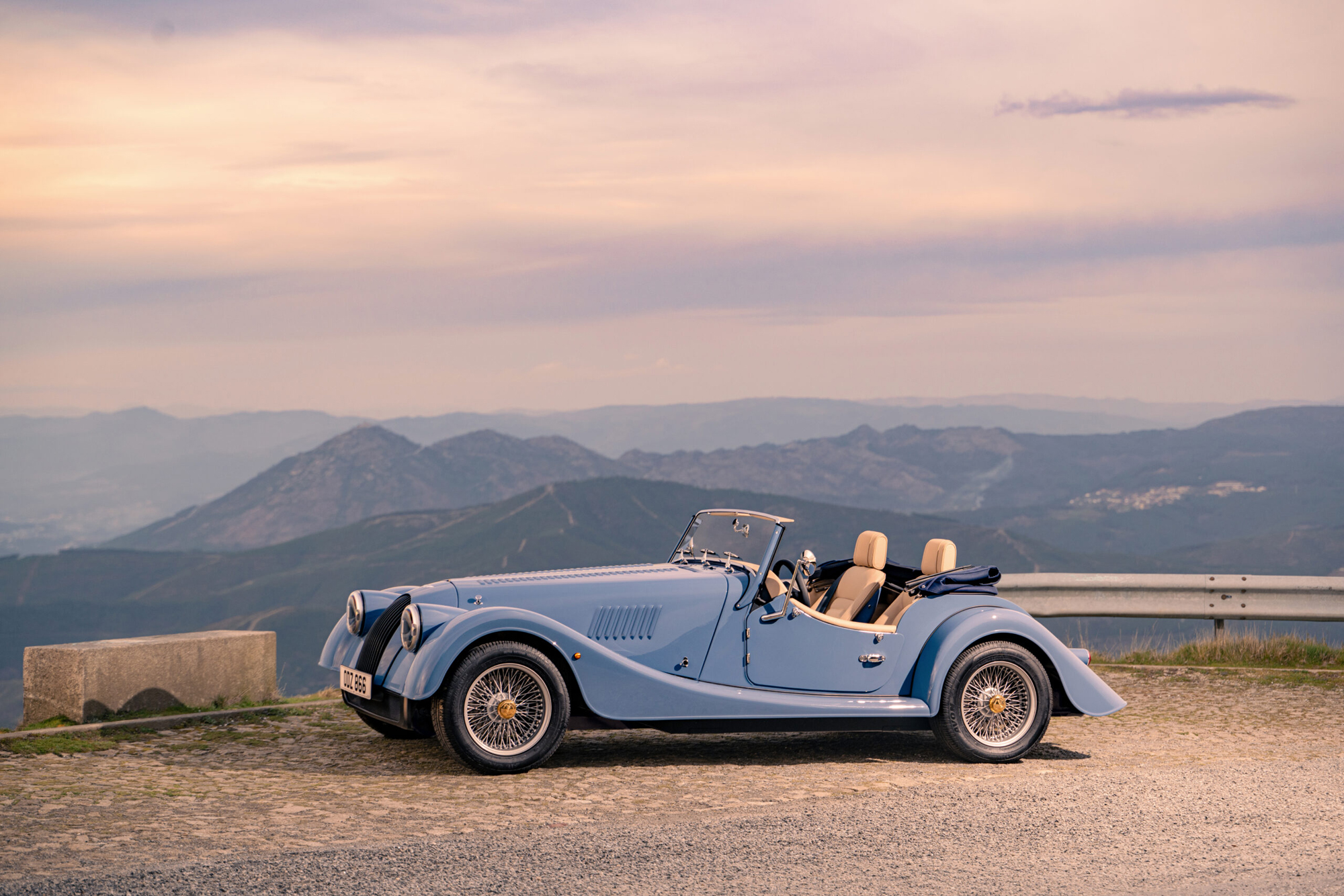
12. Morgan Plus Four
Like an AI slop reel of Elvis battling Jaws on the Titanic, the Plus Four looks old but is (almost) entirely new – the same-again silhouette hides a modern aluminium chassis and a contemporary 2.0-litre BMW engine. BMW only offers this motor with a smooth ZF eight-speed auto in the 2- and 3-series, but Morgan buyers get the chance to send its 255bhp though a six-speed manual if they can handle the heavy clutch.
What do you gain by going for the manual?
A tactile delight, though the gearing is on the rangy side.
What do you lose by going for the manual?
Torque drops from 295lb ft to 258lb ft, and economy from 45 to 39mpg.

11. Mazda CX-30
A Mazda 3 with shoe lifts, the freshly tweaked CX-30 crossover brings the same upside-down mix of lazy 2.5 and peakier, but still underpowered, 2.0 petrols as its hatch cousin. Forget the pricier 2.0 and the performance-sapping auto – stick with the base 2.5 instead and match it with the six-speed manual for the best reason not to buy a Puma – though the Ford would still get our cash.
What do you gain by going for the manual?
Pure Mazda magic – a gearbox that feels engineered for people who actually like driving.
What do you lose by going for the manual?
Slightly higher CO₂ output and a touch more clutch work in town; the auto is smoother in traffic.

10. Ford Kuga
The Kuga’s gone mostly hybrid these days, but the base 148bhp 1.5 EcoBoost 150 petrol still gets a six-speed manual. It’s the simplest way to get a Kuga that feels relatively light on its feet, and also the only U-shift family-sized Ford now the Focus is dead. ST-Line cars feel most poised, but the ride’s stiffer than a marble kitchen worktop, so don’t even think about going bigger than 18-inch wheels.
What do you gain by going for the manual?
Old-fashioned control and lower running costs.
What do you lose by going for the manual?
You can’t pair it with all-wheel drive or hybrid assistance. So what?

9. Ford Tourneo Courier
Like a Ford Puma with a tin shed on its back (and an equally shed-like interior ambience), the Courier’s miles more fun than your usual van-with-windows MPV. Why? Because it shares a platform and 123bhp turbo’d 1.0-litre motor with Ford’s fantastic baby crossover. Zesty as it is, the little EcoBoost triple could do with a few more ponies for this role, and the optional seven-speed DCT’s dull mapping means it’s manual all the way for us.
What do you gain by going for the manual?
You get downchanges when you want them – that’s very rarely the case with the DCT.
What do you lose by going for the manual?
You’ll get blisters from shining that shift knob to keep a fully-loaded Courier moving. Hustle, friend, and love every minute of it.
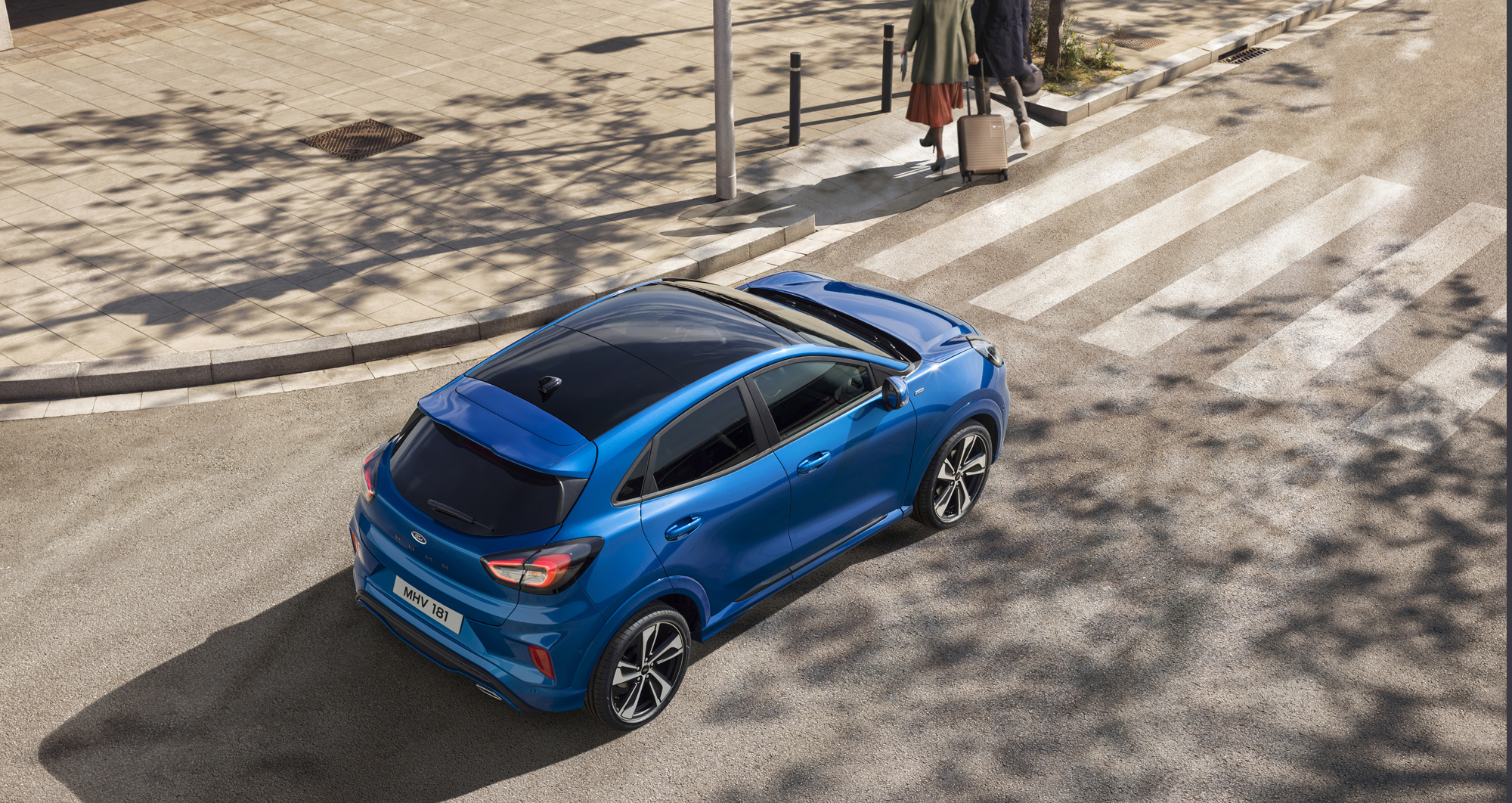
8. Ford Puma
Small crossovers are too often the wet cardboard of the car world, but there’s nothing soggy about the Puma, except maybe its disappointing cabin. The manual gearbox feels crisp, the steering lively, and the chassis happy to play. Sadly, manual playtime no longer extends to the hot Puma ST, which Ford ruined when it junked the 1.5 turbo triple and six-speed combo for a dull, auto-equipped 1.0-litre mild hybrid.
What do you gain by going for the manual?
Engagement – this is one of the few crossovers that actually rewards you for trying, rather than rolling over and falling asleep.
What do you lose by going for the manual?
Going manual means making do with the base 123bhp EcoBoost mHEV 125 engine.
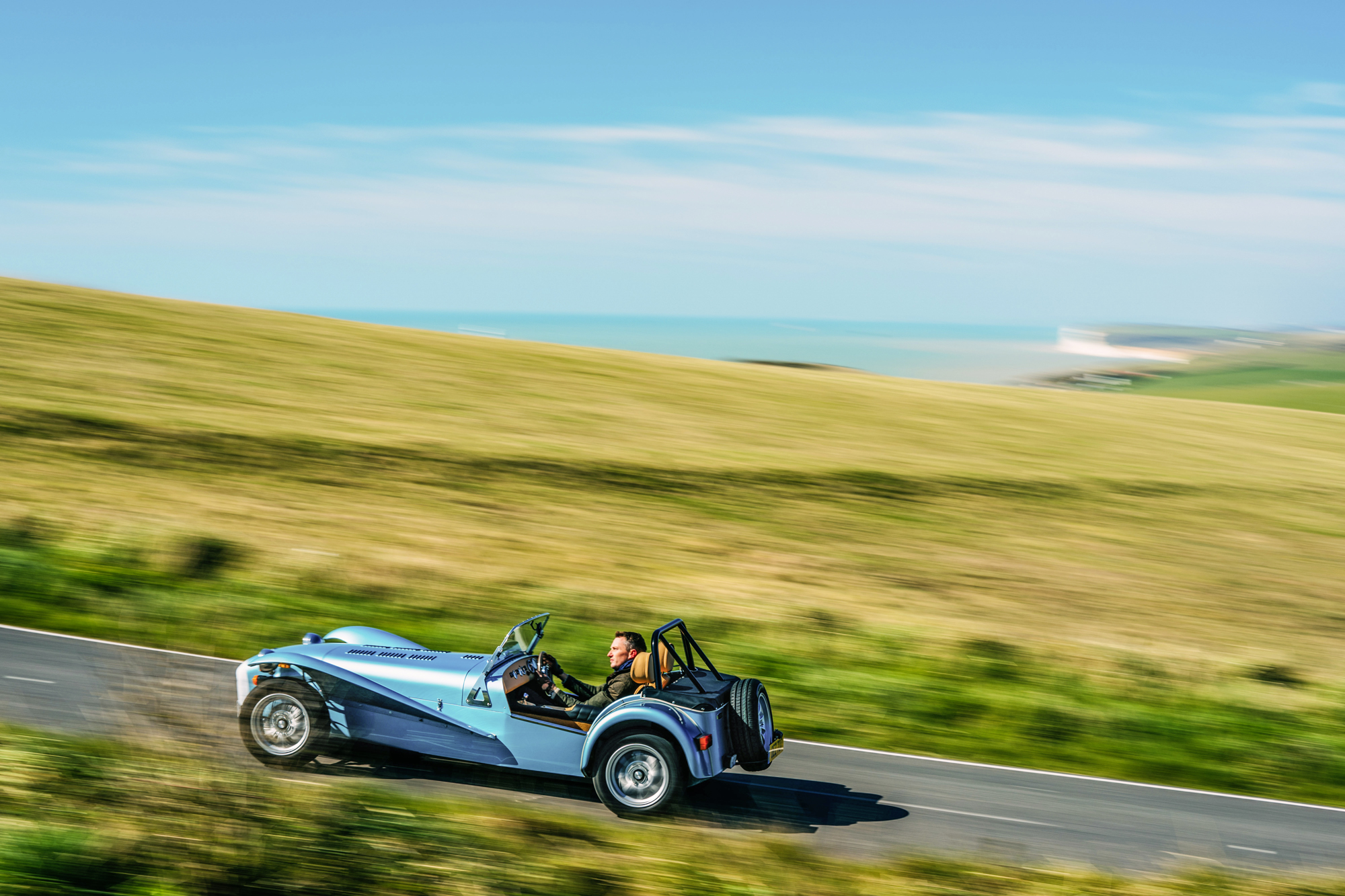
7. Caterham Seven
Imagine buying an automatic Caterham – madness. But these days the hairiest models – and when it comes to the bonkers 620 we’re talking Jason Momoa-grade grizzle – either offer or insist on a paddleshift ’box. Fine for tracks, maybe, but we get more street kicks further down the range, in a 360 or 420 giving our favourite B-road a buzzcut.
What do you gain by going for the manual?
The kind of tactile experience even Colin Chapman never dreamed of – in the Ford ’box, at least, which is more snickety than a cargo ship full of nutty chocolate bars. Kei-car-derived Suzuki ’box in the turbocharged three-cylinder 170 isn’t so nice.
What do you lose by going for the manual?
Precious tenths on a lap – and for some buyers that really does matter.

6. Toyota GR Yaris
One. Uno. Ichi. That’s the number of Toyota cars still available with a manual transmission now the Aygo X has gone full hybrid. Fortunately the UK’s hold-out stick-shift Toyota is the updated GR Yaris, a pocket-sized hot hatch that punches well above its 276bhp and makes every rainy B-road feel like you’re trying to close out Rally GB. The old Circuit pack (Michelin Pilot 4S on BBS alloys, uprated suspension, Torsen diffs) is now standard and an eight-speed auto optional. Don’t you dare…
What do you gain by going for the manual?
An even better shift in the updated car. And the auto feels soft.
What do you lose by going for the manual?
Can we get back to you on that?
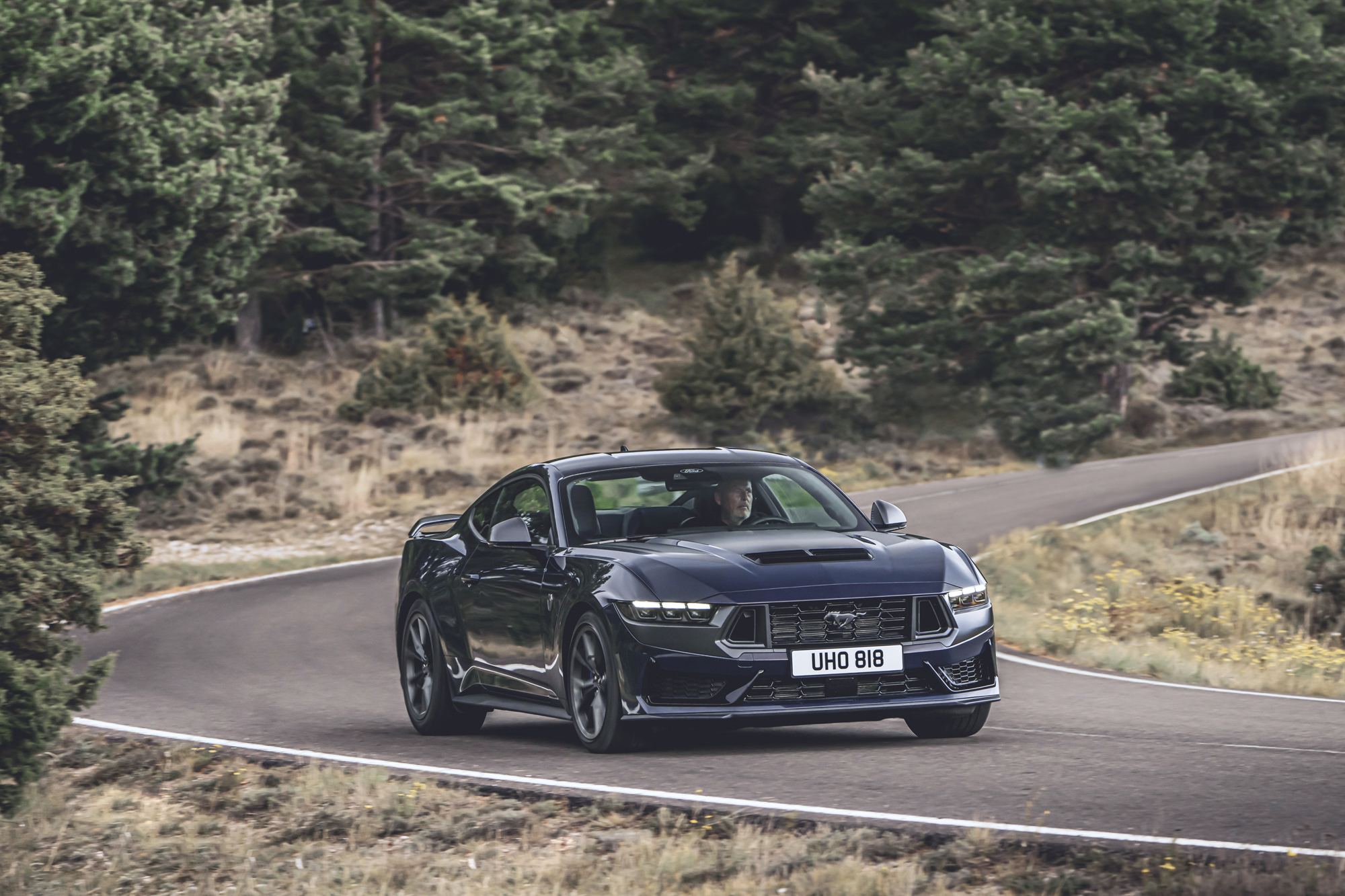
5. Ford Mustang
As if being a naturally-aspirated V8 coupe isn’t unicorn enough these days, the Mustang gives a choice of transmissions in both the 440bhp GT and the meaner, 447bhp Dark Horse. US versions get more power but the sensations are the same. They’re brash, loud and analogue in stick-shift form, and though the auto gets you to 62mph from main street’s green light half a second faster, it tends to hunt through its 10 gears.
What do you gain by going for the manual?
Raw character, Bullitt-style blip-blip downchanges and clutch-dumping getaways. I feel so alive!
What do you lose by going for the manual?
Sit through an hour’s traffic jam and you’ll feel like someone’s strapped Kryptonite to your left leg. Still, small price to pay for a shift so brawny and mood-enhancing it’s like Dwayne ‘The Rock’ Johnson… if Dwayne ‘The Rock’ Johnson was a gearbox.
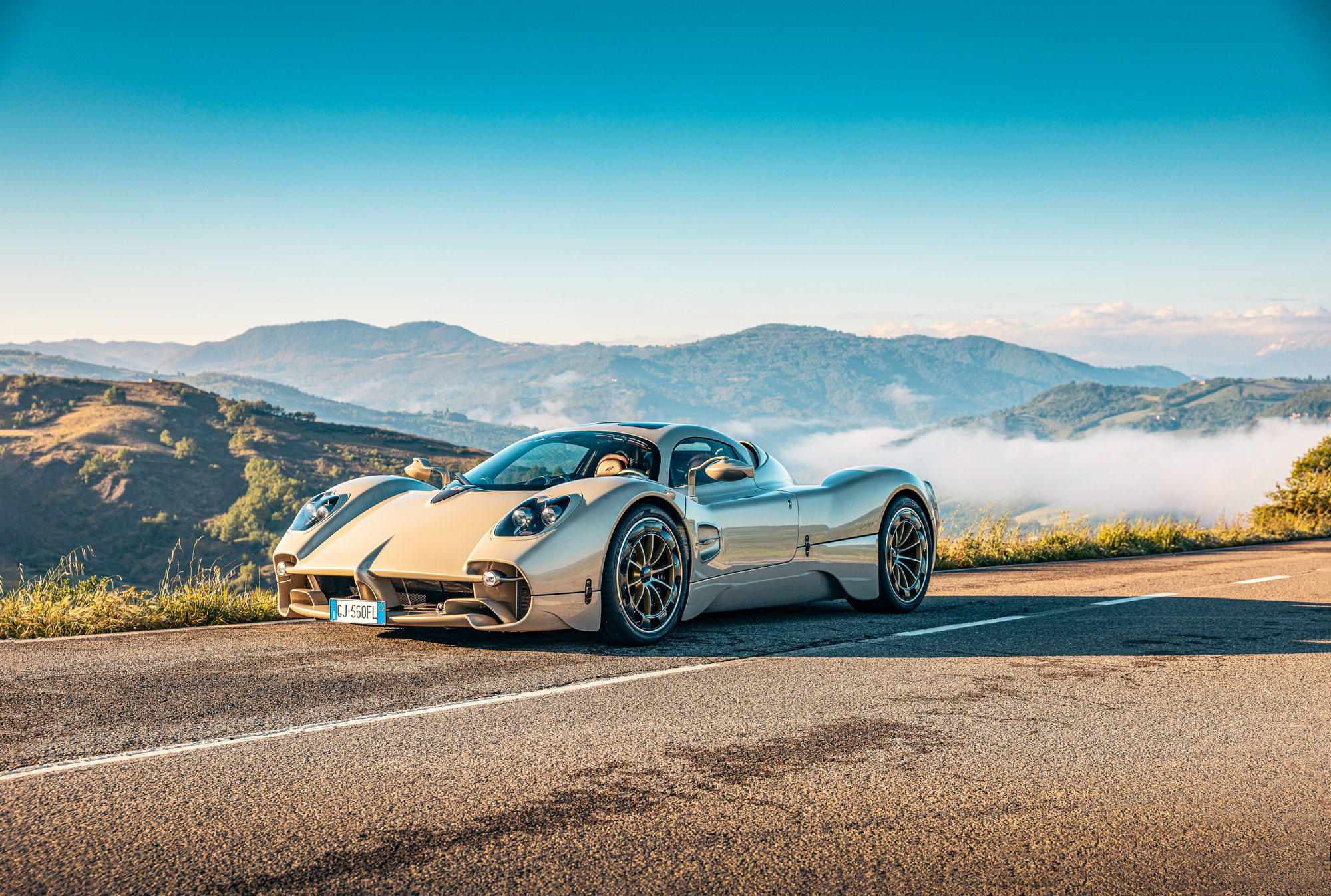
4. Pagani Utopia
Designed and built in Italy around an engine with German DNA, the Utopia’s 6.0-litre twin-turbocharged AMG V12 (producing 852bhp and 811lb ft of torque) is totally unique among today’s breed of exotic supercars, producing its big-number magic without a drop of hybridisation. There’s no all-wheel drive to look after you, either, and while a seven-speed automated manual gearbox is available, there’s also the option you want: a seven-speed manual – unheard of on a new car with this level of performance. The action itself isn’t the swiftest or the lightest, but its mechanical purity suits the character of the car perfectly.
What do you gain by going for the manual?
Everything: tactility, big smiles and some out-loud happy swearing, probably. The engine doesn’t require you endlessly row the gearlever like a canoeist in a headwind – there’s so much torque you can cruise at 50mph in fifth – but work the ’box, let the V12 rev out to its relatively low 6700rpm redline and you’ll be flying so fast air traffic control will be on the phone.
What do you lose by going for the manual?
If you’re not willing to put in the effort, you’re likely buying the wrong car.

3. Mazda 3
The 3 hatch’s new base petrol engine makes a feeble 138bhp at a diesel-like 5000rpm from 2.5 litres – these are the kind of horse-to-cube ratios that haven’t impressed since a fifth gear was a novelty. But at least it’s got more low-rev guts than the optional 184bhp 2.0-litre (standard in the saloon). Neither feels that quick or worthy of the firm chassis, but with the Focus gone, the 3’s appeal only grows.
What do you gain by going for the manual?
A gearchange that feels engineered for and by people who actually like driving. Imagine that.
What do you lose by going for the manual?
Convenience, and that’s about it. We’d go manual every time.

2. Porsche 911
Now that the 718 duo are on their way out – soon to be replaced by (mostly) EVs – your only manual-shift Porsche options are two hero 911s: the £115k T and sensational £158k GT3. You can choose a PDK auto on the 503bhp GT3 (it’s compulsory on the harder, faster and even more difficult-to-buy GT3 RS), which recently gained shorter gearing to offset an emissions-forced 15lb ft torque reduction. But the 493bhp T, a sharper, pricier version of the auto-only base Carrera, is a go-manual-or-go-home machine that’s all the more convincing this time around for swapping the old seven-speed manual for a more focused six-speeder. Delightful.
What do you gain by going for the manual?
A delicious short-throw, mechanical shift – and a walnut gearknob on the T. Loses out to the Mazda by virtue of the crazy-long ratios.
What do you lose by going for the manual?
A seven-speed PDK GT3 is faster and finds it easier to hit those 9000rpm high notes. But we’re here for a good time, not a quick time.

1. Mazda MX-5
Considering an automatic MX-5? Why not ask Mazda to custom-build you a diesel one while you’re at it? Fortunately, Mazda UK deleted the paddleshift option from the MX-5 a couple of years back to save you from yourself, though you can still get a dual-clutch Miata in the US. The 130bhp 1.5’s got bags of character but it’s channeling the go of ’60s sports cars, not just the style, so dig deeper for the plainer but punchier 181bhp 2.0. And enjoy the finest manual gearbox currently on sale.
What do you gain by going for the manual?
One of the best manual shifts in one of the best manual-shift cars. Buy it while you can. (The Honda Civic Type R would have won this countdown, but it’s going – truly these are the last days of Rome.)
What do you lose by going for the manual?
The option to kick back when you’re not in the mood, but who’s ever not in the mood in an MX-5?

